TALON


DERS A CHANCE TO THINK, FEEL, LAUGH, AND CONNECT
NIDO: FOUNDED IN 1934





Dedicated to the Class of 2024, the 90th graduating class from Nido de Aguilas








Dedicated to the Class of 2024, the 90th graduating class from Nido de Aguilas


Thank you to the Grade 4 Teachers

By: Dalia
The Talon Magazine is a notable publication at Nido de Aguilas International School, but do you know its origin story? Created entirely by students, it has become a beloved source for showcasing creativity and ideas.
My interview with Mr. Chad, the current Nido Talon advisor, provided further insights into the Talon Magazine. Established in 2013, it has now been a staple of school life for 11 years, shaping the creative landscape for students. Mr. Chad emphasized its significance as a medium for students to express their thoughts and ideas.
Interestingly, the concept for the Talon Magazine that Mr Chad told me was it all began with a lunch time conversation with a 5th grade girl that wanted draw comics. Inspired by this, Mr. Jason and the principal at the time Mr. Steve, decided to formalize the magazine, providing students with a dedicated space to showcase their creativity .
The Talon Magazine holds immense importance within the school community, fostering a culture of innovation and expression. It serves as a testament to the creativity of Nido's students, providing them with a platform to share their unique perspectives with the world.
In conclusion, the Talon Magazine is an example of student creativity and innovation. It began as a student-led project and has become a place to share ideas. . I encourage you to check out the next edition of Talon Magazine!
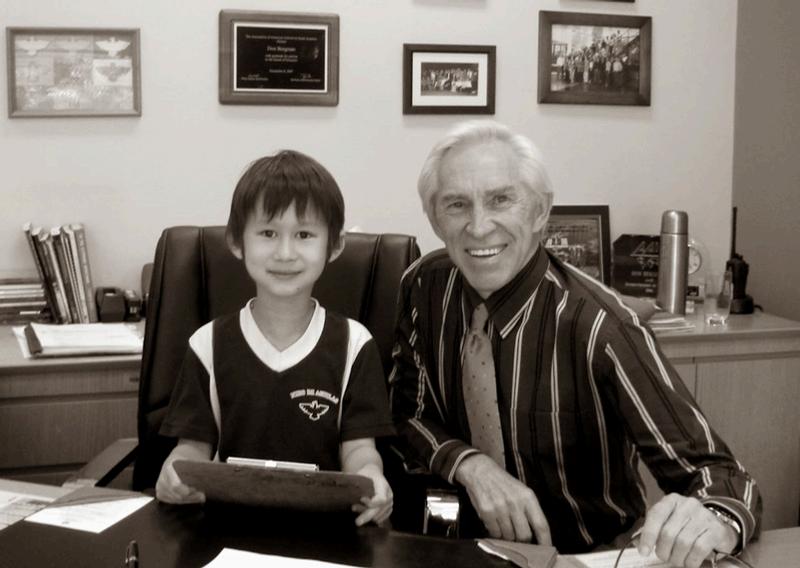

By: Owen McCarthy
Mr. Ken Kunin is the Head of School at Nido. He is a very fun person, and he is nice and respectful. He greets everyone in the morning. He works 14 hours a day and 6 hours on the weekends. Mr. Ken has worked at Nido for 2 years, and he has been the head of school at different schools for 36 years.
“Being the head of school is mostly fun because I get to see the students and watch great sports events like SAAC basketball (South America Athletic Conference). It is also hard because you need to check in with 1,523 students and 379 staff. Being the head of school means you have to help students with their problems even if you didn't start them,” said Mr. Ken.
“I try to run the school smoothly and nicely. I also get to talk with really cool students,” he added. Mr. Ken started on July 2, 2022, and has worked here ever since. He takes some holidays off but spends some holidays working at school.
By interviewing Mr. Ken, we learn about the challenges and joys of being the Head of School at Nido. He works hard to make sure the school runs well and enjoys getting to know the students.


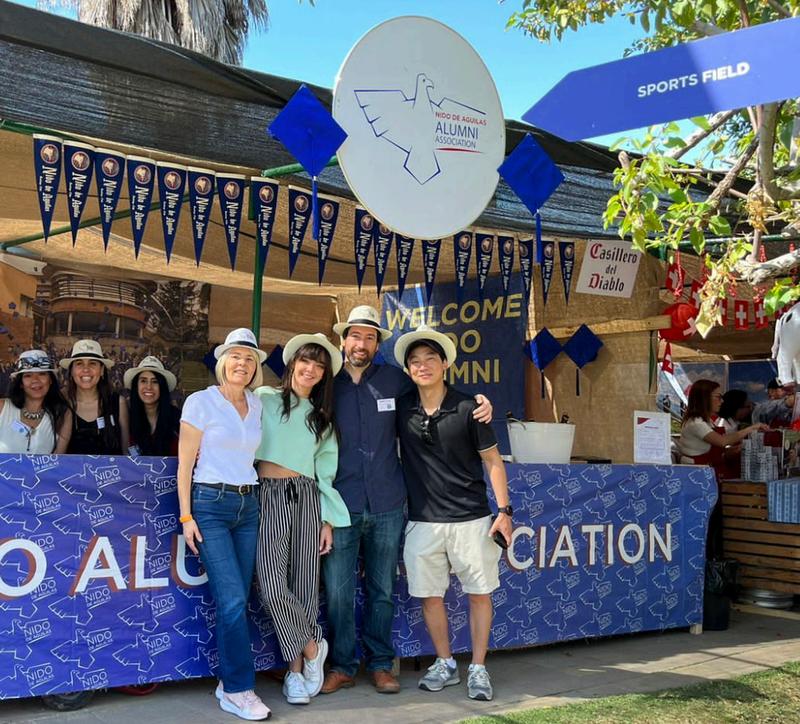
By: Trini
Have you ever met someone at Nido who has worked here for 28 years? Well, you might be wondering who I'm talking about it's Mr. Stu, the 5th-grade teacher in 5C! On Friday, May 10th, 2024, I interviewed Mr. Stu, and he shared a lot about his 28 years at Nido. Let me tell you about it. Mr. Stu came to Nido because he loves working with children and saw coming to Chile as a big adventure. He was drawn to the enthusiastic atmosphere at the school. He loves his class and wants his students to remember that they learned a lot, were happy, and enjoyed 5th grade. He has seen many changes over the years, including the construction of new buildings and the arrival of children from all over the world. He fondly recalls numerous projects and group activities, emphasizing how much fun they are.
Mr. Stu also cherishes the celebrations at Nido. He was here for the 75th, 80th, and now the 90th anniversaries, and he hopes to be here for the 100th. He engages students in fun activities like cricket, a sport he loves and enjoys playing with them. Mr. Stu is known for his kindness and enthusiasm. When asked about his advice for new teachers just starting their careers, Mr. Stu said, “Always remember: It's a new day. So, smile a lot and be happy.” New and old teachers alike frequently seek out Mr. Stu’s advice and guidance. He is always happy to help them and to remind them to smile. Mr. Stu's long tenure and dedication have left a lasting impact on the Nido community. His love for teaching and his students continues to inspire those around him.

By Patricio
The Nido Alumni Association is a tremendous support for all students who have passed through Nido Founded in 2015 by five former students, including Mr. Martin as one of the leaders, it serves to connect and assist alumni
To join the alumni association, you must have attended Nido for at least two or three years. This association is vital because it organizes sports events, field day, and participates in the Kermes celebration. Their goal is to encourage families and others to visit Nido, have fun, and build connections. If you ' re interested in joining the alumni association, contact Mr. Martin. It's a rewarding experience because you get to help people and support the school. For example, the association helped replace tables in a school that burned down in Valparaíso. Beyond such efforts, members also support each other through life's challenges. As Mr. Martin said, “We [alumni] can help each other in their businesses.”
The alumni association holds reunions where former students gather at the school for fun events with food and music. Mr. Martin took on his role to create more activities for alumni. There are different groups within the association, with leaders for each grade level who communicate via social media
As you grow older, being part of the alumni association can earn you awards, such as recognition for being a changemaker. You can also win an award in the athlete hall of fame for being an outstanding athlete, coach, team member, or significant contributor.
Joining the alumni association is a way to stay connected to Nido and its community, offering opportunities for personal and professional growth while giving back to the school and supporting fellow alumni. If you ' re interested, don't hesitate to reach out to Mr. Martin to become a part of this valuable network.

By: Minjae Jung
There are many important teachers like yours, but there are also important custodians. So I interviewed our committed elementary's main custodian Diego. When you come to school your table, classroom, and the floors, and other furniture are clean right? Well, he makes sure of that. He has been working 12 years at Nido doing a hard job that might make you retire after only one day. Let’s learn more about our worker Diego!
Diego told me that this is his first school of work. Before he started working in Nido he was working in Jumbo. His brother brought him here so that he could get a job. Diego really likes to work in Nido because Nido gives him enough tools he needs and partners. They are 10 women and two men. He said that he also likes the surroundings. That they are kind and sympathetic. He also thinks he has done a good job working in Nido.
Do you know what custodian means? It means caretaker, weird right? But custodians (caretakers) did not exist in Nido, the school would be a mess. Would you like your school hallways, classroom, playground or in the worst case the whole school to be filled with trash, clothes, school supplies, (etc? I bet not. I wouldn't. He is our caretaker of the school. Sadly, Diego says that this is his last year working in Nido. That he is leaving at june. I know it is sad but he worked 12 years. Let's give him a round of applause.
By: Analia
In 2025, SAAC swimming will be hosted at our school!
Derrick Quinet, who works in the athletics department, knows how they will organize the competition. SAAC (South American Athletics Conference) is a three-day event. They have a girls' competition, a boys' competition, and then a mixed competition to see which team has the most points.
There will be tryouts beforehand, and they usually accept many participants, but only 30 kids will be invited to SAAC. Some of the standout swimmers include a girl named Jade, a couple of Sarahs, Anna, and Isaac, who also plays basketball. The current coaches are Mr. Felipe, Mr. Ronaldo, and Ms. Rhonda.
In SAAC, there are two schools from Brazil, one from Argentina, another from Uruguay, and schools from Ecuador and Peru. This isn't the first time they've hosted SAAC swimming; they did it in 2017 and 2018. They think the swim team is pretty strong. "We're looking forward to hosting it. It's a fun event," Derrick said.
By Baptiste
SAAC basketball stands for the South America Athletic Conference. This year's tournament was hosted in Lima, Peru, at a school called FDR (Franklin Delano Roosevelt). It was one of the most important tournaments for the players.
Nido played against this school in different schools in various countries and sports. The SAAC tournament started on April 17 and ended on April 21. On Day 1, Nido played against ISQ and FDR, winning both matches. On Day 2, Nido played against UAS and Quito, losing only one game to UAS. In the last two days, they had to play against Graded to secure a spot in the finals. They won the game against Graded and were headed to the finals!
In my opinion, one of Nido's best players is definitely Jacob Bohn. He is 6'4"! Nido’s team strategy was very smart. Coach Zack instructed the team to move the ball, move themselves, and pass frequently. Nido was playing against UAS, the team they had lost to before, in the final match. They followed Coach Zack's advice and won the game! The fans and the girls' team stormed the court, jumping on the players and giving hugs in excitement. The final score was 66-47, and Nido held the SAAC trophy!
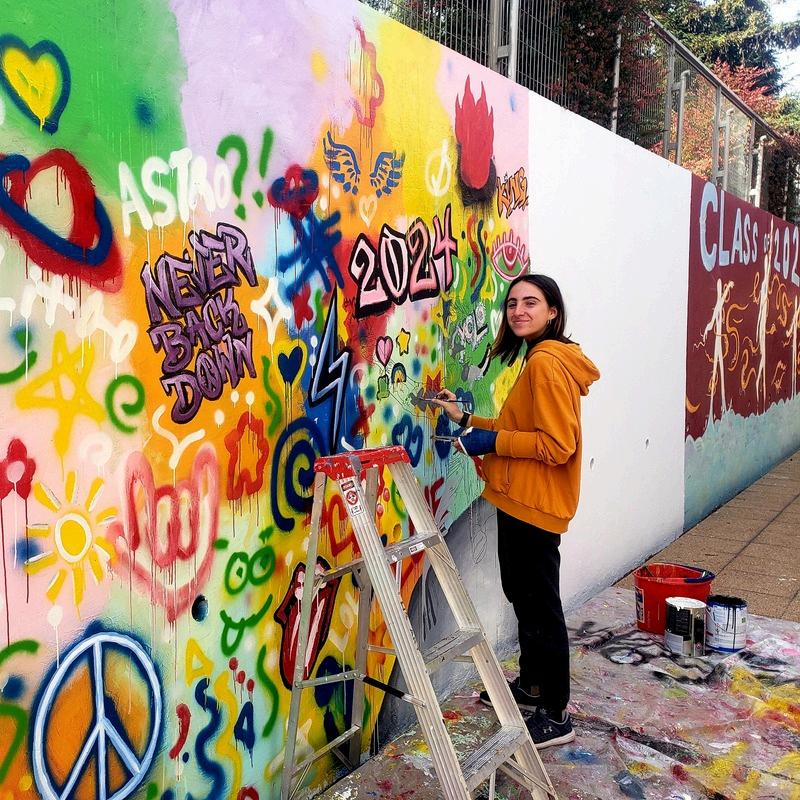
By: Zoe and Elena 4B
Have you ever wondered why there are murals in the highschool community? These murals are an important senior tradition.
Senior murals are important to Nido. Are you wondering why it is important?
When the seniors are going to graduate from high school, they paint a mural. This will help people that come after they graduate remember the past. Each mural has special meanings and symbols.
Now you are probably wondering how they make these murals. They spend about one or two weeks planning and painting. The first thing that they do is brainstorm for hours. The second thing they do is share their opinions. The most challenging part is that everybody has different ideas and everybody fights because they want their ideas. But in the end, they use all their ideas to create one mural. Finally, the mural is done and it turns out very beautiful.
When you walk around high school take a second to enjoy these murals and remember the seniors who have graduated.


By: Noah Chilcott
On Thursday morning at Nido de Aguilas in Chile, teachers and students wait until 8:00 to go to the library and check out new books. There are 80,000 books to choose from! They ask Ms. Chloe, Ms. Andrea, and Ms. Alexia which books they recommend and where the different sections are. The library was made to help kids learn more by reading and improving their vocabulary.
First of all, did you know that the Nido library has 80,000 books and only three librarians to help all the people who come? Sometimes, students help, and that makes it much easier. The library at Nido started when the school began in 1934. Different experts helped create the library, not just one person. Each year, there is a book fair where the library sells books outside.
Additionally, the library is very important at Nido because it helps students learn more The library has two different floors One floor is for elementary students, from K1 to 5th grade, and the second floor is for middle and high school students, from 6th grade until you go to college. Usually, you go to the library to check out books each Thursday. Each week, you can renew or get another book. The library is a success because all the kids can read and become more intelligent.
In conclusion, the Nido library is a special place that helps students grow. Remember, the more you read, the more you know!
By Sophie B.
Imagine you have been preparing for a year of meetings that are fun but tiring. Your hands start to sweat when you hear your name called A year ' s worth of preparation has led up to this moment. Today’s story is about the Model UN. Mr. Murray, an eleventh and twelfth-grade economics teacher, has been head of Model UN for two years and was kind enough to share his thoughts on this subject. “Although there is a teacher, it is a student-led club,” said Mr Murray when asked what he loved about it Last year, the club was super popular. They had around 85 students and three teachers, which means each teacher was watching 28-29 kids! This year, anyone could come for the first four weeks, but you had to be present all four weeks and write a position paper successfully to be able to stay. So, this year, they only have 23 students. According to Mr. Murray, “The club is a fun way to get students to think about real-world issues from a different perspective.” He believes that this is the principal idea of the club.
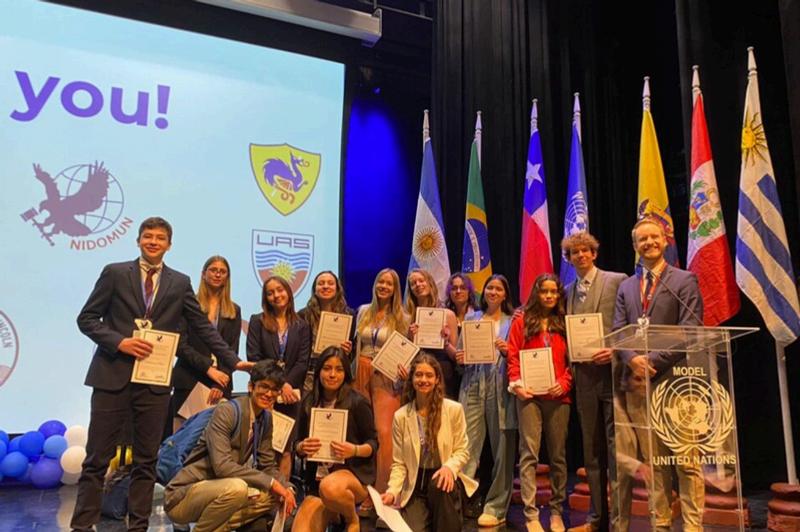
Model UN's origin can be traced back to 1927 when it was League Model UN (Mid-Atlantic). The change between it and the Model UN simulation began in 1934 when Model UN (World War II allies) simulations were held. If you are part of a Model UN club, you go to meetings once a week. At the meetings, students discuss issues and then pick one to address. Then, students are assigned countries and have to debate the matter from that country’s perspective. However, students know this is just practice because a few months before the conference, they are assigned a committee/issue and country to talk from the perspective of. They have around three months to prepare before flying off to the conferences!
Nido at a Model UN conference.
According to Mr Murray, the head of the club, the club is currently in a really strong position and getting better “The club is increasing in size rapidly and doing awesome at the conferences, so much so that we had to be selective about students this year to decrease the number!” As you can see, this is a really cool club, so maybe you should consider joining!
By: Marta
The Nido summer camp kicked off in 2004, starting small with only a handful of attendees. But by 2017, it began to blossom with more exciting activities and a growing number of students Attendance soared from 800 to a whopping 1,400 kids!
The camp caters to different age groups: 3-6, 7-9, and 10-14. Younger kids dive into swimming, while the 7-9 crew gallops into horse riding. For the 10-14 age range, it's all about soccer and mountain biking But the fun doesn't stop there! There's cooking, fashion design, arts and crafts, programming, and even clay animation. It's a hub of interactive and enjoyable activities. Every week wraps up with an Open House, giving parents a glimpse into their kids' adventures. According to Ms. Gaby Sanchez who organizes the camp, “Everybody loves the open house, especially parents. It’s fun for all!” And let's not forget Water Day – a highlight filled with water balloons, inflatable castles, and slippery slides. Kids from other schools flock to our campus for the fun-filled activities and beautiful surroundings So, if boredom strikes on a summer day, don't hesitate! Dive into the excitement of Nido summer camp!

By: Silvia, 4B
Everyday we re learning at Nido. What we learn today will help us from EYS to High School and will also help us in the future.
The main thing that helps students learn are teachers. Right? But did you know that teachers also need help in teaching!? Impossible, isn’t it? But it is true, because Director of Teaching and Learning, Ms. Patricia Podorsek, helps the teachers to help the students learn. In fact, Ms. Patricia said, Teachers are like conductors. Students are trying to learn the instruments but the teachers make the learning all fit together¨.
Another thing about learning is that people just like learning Imagine that you are doing something that is new for you and you don't know what to do. Then you start practicing and learning a new thing and you are enjoying yourself. Well that´s learning. Besides, what you learn helps you all the time Ms Patricia said ¨What you learn in P-K helps you in K1, and that helps you in K2, and that helps you in 1st grade, all the way to High School. What you learn helps you forever.

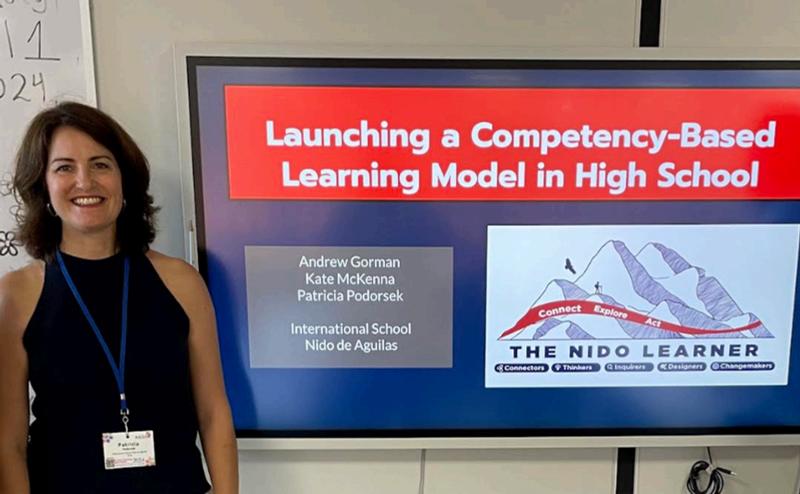
Another fact about learning is that it is also important to learn not just reading, writing and math It is very important to also learn about Social Emotional Learning. This is about how to understand and recognize your feelings. The 3Bs are also very important things that Nido students and teachers value. The school made the 3Bs so everyone is kind, respectful, responsible, and feel included. We never stop learning at Nido and it will continue when we go onto college and our future jobs. But, even then, you never stop learning.


By: Alvaro, 4B
Did you know the person ‘behind the scene’ is Ms. Paula?
She helps the bus drivers, janitors and the cafeteria people Ms. Paula has a very big job. One of the most important is that she helps the bus drivers in the morning and gives messages to them.


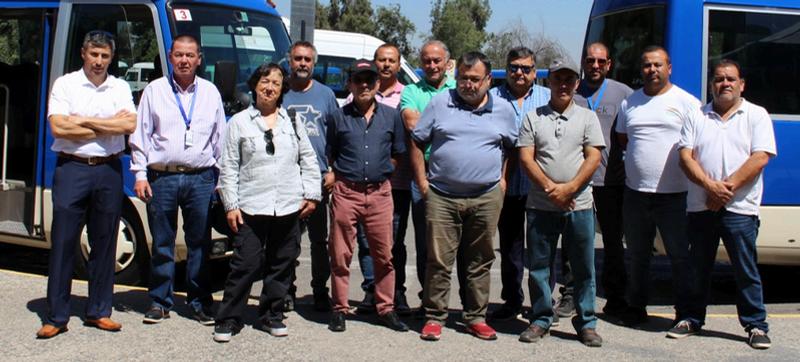
The buses go to Vitacura, Lo Barnechea and Las Condes. The buses have a daily routine for the day. They start by picking up the kids and later in the day they will drop them off at home. They do this daily. Another thing Ms. Paula helps with is if somebody loses something like an instrument, Ms. Paula gets it and brings it to the office. You can pick it up at her office or sometimes on the bus. She also sets the rules for the buses and tells your parents if you have done something wrong on the bus On the bus you should remember to put your seatbelt on and be respectful. Sometimes, the bus driver will put you in the front of the bus or have you sit with someone else. Remember to make good choices on the bus so that you can enjoy the ride.

By: Sean
On May 8th, I got a chance to talk to the director of the EYS, Mr. Robert. I learned all about his duties with the kids, including his hopes and dreams and much more.
What do you think is an important feature of the EYS?
Mr. Robert told us that the most important feature of the EYS is an open-space area so kids can play and explore outside. There must also be an interactive indoor space for students to investigate.
Now imagine that your 4, 5, 6 or even 7 year-old learns at the EYS building. What kind of building would you like? A boring crammed class where all the kids are quiet and anti-social Or should your child have fun, interesting, social class. Think about it!!!
If you could build anything at Nido for our youngest learners, what would you want? An outdoor area for mud puddles and getting dirty? A room just for making stories and creativity? A mini library? All these original Mr. Robert’s ideas can make your kid come home from school excited and enthusiastic to start a new school day tomorrow!
For Mr. Robert, all he wants for the kids to do is to come to school happy, learn, grow, and then to leave school happy. Mr. Robert doesn't like everything in the EYS. He would love to change some things, like get rid of some walls to make it brighter and more natural
In conclusion, next time you go to Nido, go to the Early Years school building and explore it a little!

By: Caetano
Seniors from Nido often struggle with finding a university and doing the application process Ms Dee Slattery helps them with both things She is a high school counselor Her main responsibility is to help kids with their feelings and help them find universities. She will then help them throughout the application process.
Ms Dee Slattery helps students with many things when you are in high school. She helps you with problems with friendships, with bullies or something you are uncomfortable with at school.
Ms. Dee will use the university program to ask you questions and find out your likes. They will then suggest universities that fit you. If you also want to go to a specific university, you can also talk with Ms. Dee. A fun fact that I learned was that the most popular job degree that Nido students apply to is business or engineering. The universities that receive most of the Nido students are IE or UBC and also BUC.
In the end, if you ' re in doubt for your future, talk with Ms Dee If you have problems with a friend or bully, talk with Ms. Dee. Finally, if you have problems finding a university or problems with your future in high school you talk with Ms. Dee.


VIOLETA 4E
Hello, have you ever wondered what are the most secret secrets from The Lion King? Well if you want to know which ones are, stay here
I asked Mr. Emilio, the music teacher, some questions.
The first question was, when did you get the idea for The Lion King? Why? He said “The Lion King was born as an idea in 2019. We even started the process of auditioning and building props. But sadly in 2020 pandemic stroke. And we weren't able to put the musical together. But when we got the green light from the school to do musicals, we went for Annie, and then we went for The Lion King ”
My second question was, how do you choose the student to be a character? And he said, “Normally, it is not just me making the decision, there are a whole bunch of people making the decisions. I always try to put a counselor in the audition process. And after that I start deciding by category. Musicals sometimes ask for specific types of singer or the gender Also it depends if the student behaves okay in classes, has a good voice and participates during music class Normally that is the type of student I choose ”
My third question was, what is your favorite song and choreography? Why? Mr. Emilio said, “My favorite song is He Lives In You. Because it is a song that touches me quite personally, because I remember this year I lost my father. And in the show I try to apply everything he has teached me through the ages, like how to be a good person and someone who tries not to judge people And that song talks about that And by far my favorite choreography is I Just Can't Wait To Be King I like it a lot because it is the part of the play where everybody is happy.”
My fourth and last question was, if you could be a character in the play, who would you be? Why? Mr. Emilio responded, “Probably I would be Timon or Pumba, because being the comic relief it is just the easiest work. Mufasa, Scar, and all those characters have to deliver and concentrate on the message they have to give to the audience Meanwhile, Timon and Pumba have the characteristic that if you say a joke you tell the joke.”
Did that answer your question? Well I hope it did.
Thanks for reading.

BY DEAN
Mr. Martin Sanches is a technology teacher. At the impressive age of 16, he built his first computer. He is an alumnus from the United States of America After graduating, he worked in a small store on Cantagallo Street, fixing computers until 2013 That year, he found a poster that said, "Work in the IT department at Nido for 6 months!” He was hired full-time in 2014 at Nido. What started as a six-month job turned into a year, and that year turned into a decade.
He studied computer science in Canada for two years. Then, he moved back to Santiago, Chile, and finished studying digital design at the Universidad del Desarrollo for five years.
Mr. Martin named the Makers Lab. Initially, it was called the ES Makers Space until a person named Hill wanted to create a Makers Lab for middle and high school students, so the school renamed it the Makers Lab.
Mr Martin also created an after-school activity for elementary robotics. Later, he started an after-school program for middle school students because it was more advanced.

By: Jaci, 4B

Have you ever wondered what Nido was like in the 1980s? I got the opportunity to get to know Ms. Paulita. She was a student in the 1980s and then later became a teacher at Nido. Have you ever stopped to think or imagine what Nido was like in the past years? In some ways, Nido was the same. For example, one thing they had in the 80s was the Kermess, a celebration of countries. It's a party for everybody to come together and celebrate our differences and to have fun. This event continues today. Another thing that has not changed, is that students did a lot of hikes. They went and had a good time in the mountains. These are two similarities between the 80s and the present. Now I'm going to tell you many of the differences. Did you know that Nido didn't have a theater or a swimming pool? Can you believe that? That's crazy. They couldn't go swimming and they didn't have theater so they didn't have musicals. Isn't that surprising! Another difference in the 80s was that every Monday morning a student lifts the flag. For what? They lifted the flag because it showed respect for the school. They also had horseback riding in PE. Isn't that crazy? They ride horses in school. These are just a few examples of what life was like in the 80s at Nido. I hope you learned something from here. If you had the choice, would you prefer to live in the 80s or now?


By: Isa
Meet the Green Places of Nido
Welcome to the green groups at Nido
What do they help or what do they do? This committee has taken on a very important task, sorting the trash. For example, they recycle paper, and have made clear signs so people can recycle cardboard, glass, plastic bottles and tetra packs. Everything else goes in the normal trash. The places to sort trash are found in many places around the school. For example, in the Elementary School recess area, lunch area, international park, and different hallways around Nido. The green groups that students and teachers can participate in are only in high school and middle school. What they want to improve at Nido
There are many things this green group would like to see at Nido. For example, they would like for the new EYS building to be made out of sustainable concrete. Another area they’d like to improve are the lunchtime areas like the hill. These areas are not used and they would like to use that part for something else. For example, it can be turned into a garden with flowers and they could put tables so that they could work there. They would also like to make a vegetable garden so they can be involved with the Cafeteria and encourage healthier eating. The Green Group will continue to make positive changes and the group will change each year.

By: Cloe 4B
Did you know at Nido there are 15 security guards? You might ask yourself, why so many? It's to keep you safe! A security guard's first priority is you. What does a security guard do? How do they feel about what they do? I got the inside scoop from Luis Marin, the director of security. Before working in Nido, Luis Marin worked as a police officer for 20 years! He is 53 years old and has been working at Nido for 10 years. Before working in Nido, Luis Marin worked as a police officer for 20 years! What does a security guard like? What do they dislike? Well this security guard, Luis Marin, really enjoys greeting people in the morning. On the other hand, when kids are on vacation the campus turns silent. Just as Luis Marin said, “The worst part of my job is when kids are on vacation.
Because when kids are on vacation all of the sounds disappear.” For Luis Marin it feels weird when everything is quiet. A security guard has a busy schedule. Have you ever really thought about it? At 5:30 in the morning Luis Marin is ready to start his day while handling the traffic and the parking lot. During the day, Luis has his walkie talkie in case of an emergency . After a long day keeping you safe and keeping close contact with other guards, Luis Marin leaves the school at 5:30 in the afternoon. Now that you know all the hard work a security guard does to keep you safe, when you see them make sure you say, “Thank you”. Without the security guards Nido wouldn't be the safe place it has always been.
By: Nicolas
Did you know every week student leaders have to sacrifice their recess to go to a meeting to talk about what to do or what to help on? That day people in recess say ¨what happened to the student leaders? Did they disappear?¨. Well no, they are actually in the meeting.
The student leaders have a check in with Mr. Billy to help organize things. For example, they discuss problems around school and think of solutions. One problem they solved was helping kids when they feel alone by using the friendship bench. The student leaders go to the friendship bench and play games with them.
To be a student leader you NEED to respect the 3BEs. Respecting the 3BEs means being respectful, being responsible and being kind. That is also helping people to do stuff. As student leader Silvia shared, ¨what a student leader does is they help people to do things.” Student leaders help make positive changes at school. Being a student leader is an honor but also tiring. They have a lot of responsibility but it is worth it. What does a student leader mean to you?

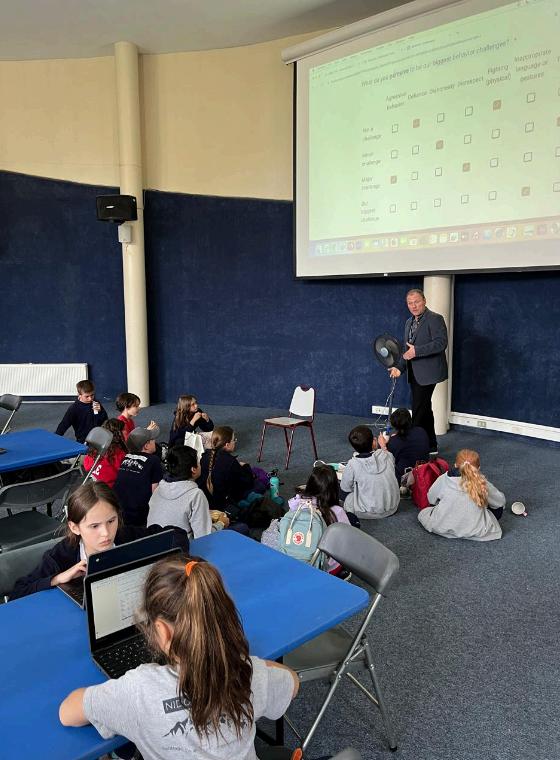
BY SARAH
Do you happen to like plans? Maybe future plans? Well you're at the right place then! My amazing interviewee Mr. Ken Kunin, the headmaster of Nido, knows all about Nidos 50 year plan! The plan consists of a whole new campus, an organic garden, a new gym, some key considerations, and much more.
To begin with, Mr Ken is really excited that we will work to re-energize and completely change most of the campus. It began a couple years ago when the directors decided to make a master plan, and so they started to look for partners who were willing to help, so the school sent out a request for proposals. They asked architectural firms from all over the world, ”who wants to participate?” and so, one firm specifically named SASAKI from Boston, Massachusetts won the proposal. ”Over time I think a lot will change,” Mr Ken said. ”But remember,” Mr Ken added, ”It will be a long plan.” He also said that elementary school will be one of the main focuses of the master plan. They just need to re-furnish it, paint it and clean it up a bit. So that will all be probably done before the full master plan. Either way, the 3Bs will stay, because they just want people to feel like they belong, and be thoughtful, and have integrity.
In addition, Mr Ken also said that SASAKI helped the directors listen to a bunch of voices, they would hand out surveys and with all that information.

They made a generated map of what Nido would look like in the course of the next couple years. And so the plan is not that specific. SASAKI and the directors will make decisions based on what's happening at that time. (Developments, etc)
“But the general idea is to make a plan that feels more logical, and more pulled together, we want to make it easier to move around with the library being kind of the heart,”Mr Ken said. Well one thing is that the master plan will be as sustainable as possible but in Mr Ken’s words he says that if there is a tree that’s not a native tree and it’s kind of in the way, they’ll have to cut it down. Plus it’s not just SASAKI but everyone will need to build with things they can find here, not materials you can find miles away. We want materials that can be found in chile.
The process has already started, like the upper field is new, and the blue court’s tiles that moved around are now fixed. However they are still missing the bleachers and that kinda stuff. The major change will be that some buildings will be removed over time since they get old and will be removed. Over the next 15 years about 6-8 new buildings will be built. Finally, Nido could be getting a new re-figured international park more connected to the outdoors.
In conclusion, my article is important for nido to continue to provide first class education in the future, the installations for students and teachers must be top notch. Further, the school continues to work with sustainability for example in regard to energy efficiency, waste handling, and water usage.

By: Ema
After covid a group of 5th graders learned that other schools have dogs to help students. They decided to bring some dogs to Nido de Aguilas and thought, "We should have more dogs at school." They began researching how to establish a dog program and created a committee of students and teachers to organize it.
This is how the program started.
In high school, the dogs come every day. In elementary school, dogs visit the 5th-grade classroom every Thursday. For 6th, 7th, and 8th grades, dogs come every Friday.
Luna and the other dogs help students when they feel sad, angry, or stressed. When students are too sad to speak, spending 15 minutes with Luna often helps them open up and feel better The dogs also help students who are very upset and want to go home; they feel better when Luna is with them. Luna also supports teachers during their free periods or when they are dealing with stressful tasks like grading. Teachers can take the dogs for walks to relax.
The dogs in the program are not trained for protection, so they cannot be breeds like Rottweilers. They need to be calm because they spend most of the day in the office. They also like to lie down and sleep. The dogs go through training classes, and while Luna is already trained, the other seven dogs are still in training, including two puppies. So, we currently have six dogs, including Luna.
By: Joaquin
After-school activities at Nido's elementary school started a few years ago. Ms. Pamela Olivares organizes them. There are three types of activities: physical, artistic, and academic. All students can join, and activities happen every day on campus. These activities are important because they help kids learn new things and make new friends They can try different activities in a safe and fun place After-school activities help kids do better in school by giving extra help with learning and homework They also teach kids how to work well with others. Sports and games keep kids active and healthy. Fun activities like art and music make kids feel happy and less stressed. After-school programs let kids find new hobbies. They also teach kids to manage their time and be responsible. Overall, after-school activities help kids grow in many ways and keep them safe after school.
At Nido's elementary school, there are many different afterschool activities. Some of these are karate, parkour, guitar, gymnastics, board games, yoga, and more. Ms. Olivares says, “Football is the most popular after-school activity. Many students sign up for soccer after school.” With all these choices, it’s easy for students to find one they love.
If you’re interested in learning more about an after school activity, please contact Ms Olivares or sign up for activities in Schoolsbuddy at the beginning of next semester.

By: Iris

By: Danny
Throughout its 90-year history, Nido de Aguilas has maintained a strong connection with the natural world The school acquired these hills in 1964, providing students with a space for exploration, where they can immerse themselves in nature, study the landscape, and marvel at the wilderness. Regular access to these hills has been shown to offer numerous health benefits, including stress reduction, improved physical health, increased self-esteem, and enhanced focus.
After-school activities (ASAs) such as urban gardening, climbing, and trekking strengthen the bond between students and nature. There are numerous ways to connect with nature, each offering significant benefits. Nature has much to teach us that can enhance our society. Nido embraces these ideas by fostering connections with nature and providing a well-rounded education on topics like climate change and weather conditions through field trips and hands-on activities
The International Park was built 60 years ago It started small, but in the 1980s, the school began planting trees native to the various nationalities at Nido. One of these trees is the loquat, which produces a small orange fruit that you can pick and eat. Loquat trees are native to China and Japan. There was also an oak tree that had died, but instead of cutting it down, a Nido alumnus, who is an artist, carved it into a beautiful sculpture that still stands in the park today.
The International Park brings people together through fun events and cultural celebrations. For example, this year, we celebrated Nido's 90th anniversary by giving out cuchufli and bananas in the park. There was music, dancing, and performances, and the whole school community joined in the celebration. On the day before the Dieciocho break, the school handed out little Chilean flags in the International Park. Ms. Andrea Benasus, a member of the Nido Admission Department, said,
“The International Park brings people together.”
In conclusion, the International Park is a wonderful place for family and friends to gather and celebrate events like Dieciocho and many others It is a symbol of unity and cultural diversity at Nido, reflecting the school's commitment to bringing its community together

In fact Nido is so invested in its connection to nature that a student published a poem about nature many years ago:
Oh! Nature, divine present and gift, enormous source of health and life, source of great peace and beauty, your greatness must be cared for with love.
Mr Zack Beaty, Nido’s Outdoor Education Coordinator, once posed the question, "How can we be good users of nature?" This is an important consideration. Fortunately, dedicated individuals like Mr. Beaty play a crucial role in organizing activities and outings, such as the 4th-grade erosion field trip, which are vital to the Eagle Explorers and their mission. Additionally, the Nido campus is expansive and open, with a strong emphasis on the outdoors, further enhancing the connection between the school and nature.
Oh! Nature, that suggests the verse that influences the poet to praise you, that makes the artist want to paint you, and forces us to love and care for you
Oh! Nature, that influenced the School with your beautiful mountains, with the subtleness of an educator forming strong and well bred eaglets.
Oh! Nature, that charmed Waldo Stevenson with your natural gentleness, leading him to create Nido de Aguilas School with an educator's great effort, tenacity, and love.
By: Gabe
The International School Nido de Aguilas has changed a lot over the years, and Carlos Paz has seen it all This article tells the story of Nido's history and changes through Carlos's eyes. Carlos Paz started working at Nido de Aguilas' new campus in Lo Barnechea in 1998. Back then, the school was still finding its footing. "Todo estaba más chiquito, más compacto," Carlos recalls, reminiscing about a time when everything was smaller and more compact. The campus included only the high school, the library, and the elementary school, with no middle school in sight.
Carlos has worked at Nido for 36 years and is now in the Department of Security. His connection to the school runs deep because his father was a school guard, and his siblings also worked there. Carlos began working at Nido when he was about 21 years old and even lived on campus while it was still being built.
Most people think of Nido de Aguilas as the gigantic campus in Lo Barnechea, but, over the years, the school has also had campuses in other parts of Santiago, Chile, like Peñalolén and La Reina. In the first year at the Peñalolén campus, there were only three students: two Germans and one Chilean Nido de Aguilas was founded by Waldo Stevenson and Juanita Keller in 1934, which means the school is 90 years old. Over the years, it has grown and changed to meet the needs of its students and community. Today, Nido de Aguilas is known for being an excellent and innovative school in Chile.
Through Carlos Paz's story, we learn about the history and growth of Nido de Aguilas a place where dedication and history come together to shape the future.

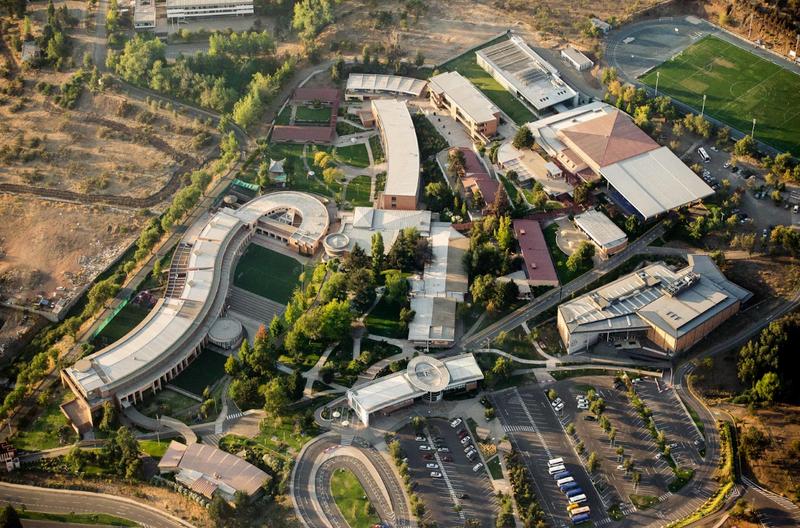
By: Theo
Have you ever noticed your mom mentioning something about school that you didn't tell her? Well, it's possible that she learned it from the NPA. The NPA, or Nido Parent Association, has been an integral part of our school for quite some time. Their main role is to address the school's needs and work on solutions to any issues that arise
The NPA is responsible for organizing events such as International Day and Trunk or Treat Additionally, they serve as a connection between parents and school administration, advocating for the interests of both parties. Ms. Mariana Papa, the ES Vice President of the NPA, emphasizes their commitment to fulfilling their responsibilities. She states, "We want to continue doing our job to the best of our abilities," highlighting their dedication to serving the school community.
Essentially, the NPA acts as a bridge between parents and students, fostering a strong sense of community within our school. Their efforts not only help resolve issues but also contribute to enhancing the overall school experience. From organizing events to lending a helping hand, the NPA plays a crucial role in supporting our school community, and we are grateful for their contributions.
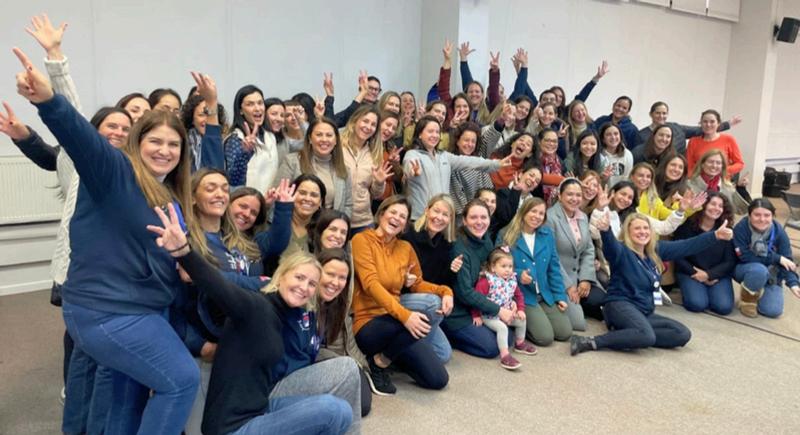
By: Sophia
Ever thought about what the school board does and some of the big decisions they have made? Well in this article I will explain exactly that.
The Nido School Board has ten members. And recently, I talked to Ms. Lauren Cozzolino Arias, the vice chair, to learn more about the school board. The board sets Nido's values, strategies, and mission. They also guide the school's spirit and direction
One of the board's main jobs is to ensure the school's values match its goals and community needs They plan long-term strategies to improve the school now and in the upcoming years, like adding programs and upgrading facilities. Ms. Cozzolino Arias stressed “We have to make decisions today that are going to make Nido the best school going forward.”

In the past few years, the board has made some big decisions. They've helped expand the campus, bring new technology into classrooms, and improve support services for students. They also work hard to keep the school certified and uphold its reputation as one of the best international schools in South America
Ms. Cozzolino Arias emphasized that the board's work is a team effort They listen to input from teachers, parents, and students to make choices that benefit everyone in the Nido community. Their goal is to create an environment where students can excel in every way!
In conclusion, the Nido School Board plays a vital role in shaping the school's future. With 10 dedicated members, including Ms. Lauren Cozzolino Arias, they set the course for Nido's values, strategies, and mission. Their focus is on aligning these with the school's goals and community needs, ensuring a bright future for Nido. Together with teachers, parents, and students, they are steering Nido towards continued excellence and success.
Hadar Anzarout
If you were meeting a teacher that has been a lot of time in the school wouldn’t you ask her some questions? I would, and so I had an interview with Ms. Alexia Haverbeck. She works as a librarian at Nido. Ms. Alexia has been at Nido for 45 years. This includes when she was a student and a teacher.
To start with, I asked Ms. Alexia why she likes Nido and she said ‘’I like Nido because of different cultures at Nido like kids from other countries and other religions.’’
Another thing that I asked Ms. Alexia is what is her favorite class and year. Ms. Alexia answered, ’’all the years are special; also I like Spanish class and English and sports.’’
Also, I asked Ms. Alexia what is her favorite lesson that she really likes to teach. She said, ‘’I like to read to all different ages especially to the little ones and because there are different units.’’
Another detail Ms. Alexia told me is that, even though she was a student at Nido, she didn't graduate from Nido! But her daughter did. Ms. Alexia sent her daughter to Nido because she thinks Nido is the best. Now Ms. Alexia's daughter is making a little school like Nido. The school is called Casa Verde and she teaches there.
The last thing I asked Ms. Alexia was, “What is the hardest thing that happens at Nido?” She said, ‘’the hardest thing is the changes that happen in Nido.’’ In 45 years at Nido Ms. Alexia has seen a lot of changes. To be at Nido is not always easy, BUT SHE LOVES NIDO.
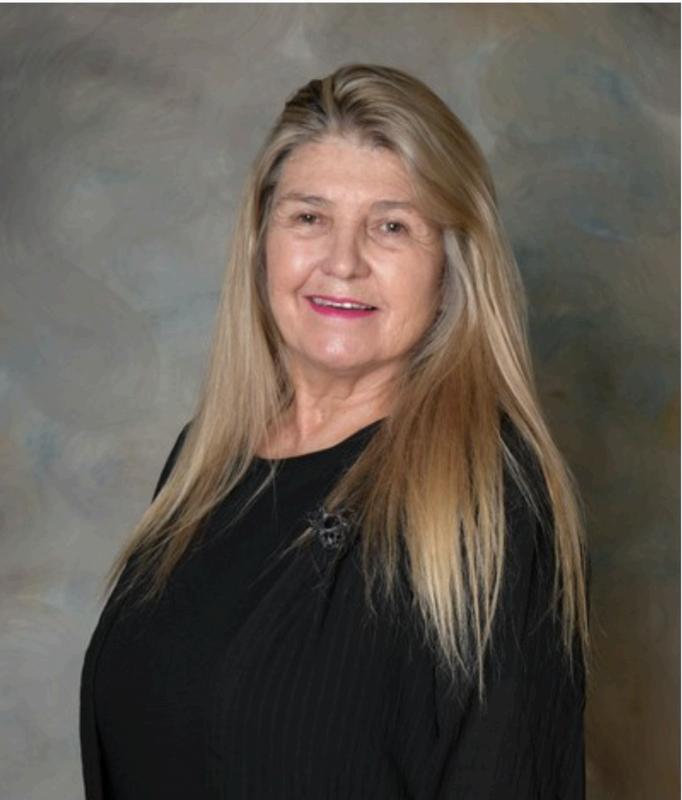
MS ALEXIA HAS BEEN 45 YEARS AT NIDO (INCLUDING WHEN SHE WAS A STUDENT) AND SHE STARTED TO WORK AT NIDO WHEN SHE WAS 21 YEARS OLD

Every season the sport is the same but the players change, so today we will interview the varsity basketball men ' s coach Mr. Jon. Mr. Jon is the basketball coach and has been a teacher for 13 years. Mr. Jon also has an assistant coach, Mr. Jesse Prichart.
Firstly, I asked him, is it hard to be a coach? And he said this. “Yes because it depends on the player. If he is hard working, yes, but if he just wants to play, no.”
After that I asked him, have you trained another team before? And he said no. Before I trained the girls varsity basketball team, after the boys.
Additionally, I asked him how Nido’s boys played very well this year. How do you do it? Then he said, “We train hard Monday, Wednesday, Friday, Saturday in season. And who can not come in season we train two times a week.”
I also asked him, is it fun to be a coach? He said “I really enjoy it because it is really fun to travel.” I also asked him, if you were a professional player, what team would you play in? He said, “Chicago Bulls, because I was born in Chicago.”
Lastly, I asked him if you were a professional coach, what team would you train? He said “No, because it is about winning, and losing.” And he doesn’t like that feeling.
In conclusion, I think Mr. Jon is important for Nido, because without him the varsity basketball boys could not play as well as they play now, and win so many SAAC tournaments. What a legend!
By Pedro

Every year new kids say hello! But also friends say bye So today we are going to interview Daniel Papa from Brazil He has been a student since pre-k and now he is in 4th grade, his last grade
To start this interview I will ask what's the best thing about nido? For Dani the best thing about Nido is that you can play soccer in recess because it's very fun! And what are some rare experiences at Nido? “Mmmmmm, let me think” said Dani until he got an idea, “when it snowed, everything was covered with snow” said Dani
What about your friends? and tell us about your favorite class Dani said his favorite class was 2nd grade because “I had a lot of friends in the same class and I had a very good teacher ”
Lastly, what did you learn in nido that you will remember all your life? Then Dani said he will remember all his life how to make friends Would you prefer to go or stay in Chile? Dani said he would prefer to stay in Chile because he probably has more friends here So then I asked, why are you leaving? And Dani said he's leaving because in the United States ob
This article is important to the history of Nido because, people can learn from Daniel and know about his history Also when people read this in the future they will learn how Nido was before

By: Courtney
Becoming a room parent is driven by a desire to be involved and contribute to the school community. My mother, Ms. Nikki Langner-Campbell, became a room parent after my brother and I expressed our excitement about the idea. She embraced the role enthusiastically and has served as a room parent for grades PK-6. However, parents can only be room parents for the class their child is in One of my mother's most memorable experiences as a room parent was coordinating the fifthgrade graduation party Instead of choosing the usual venues like Mampato or Kidzania, she and the other room parents wanted to create a unique and exciting event. They decided on an amusement park theme, aiming for something fun and out-of-the-box thinking. The room parents faced a significant challenge: they didn't have enough money for the amusement park idea. However, they were determined to make it happen. They organized various fundraising activities, such as bake sales and a movie night, to raise the necessary funds. While some traditional elements, like the color run where teachers throw colors at students as they run, remained unchanged, they introduced new and thrilling aspects to the event. The amusement park featured exciting rides, including inflatables, a rocking boat, and a bungee trampoline.
Being a room parent involves creativity, collaboration, and a commitment to creating memorable experiences for students. It's a rewarding opportunity to contribute to the school community and create lasting memories for children and their families. But, don’t take my word for it…just ask Ms. Langner-Campbell, who put it best when she said, “Do it! It is fun! It's not a lot of work, and it's really nice to get to know the school. It’s a really great way to get to know new people, and it's fun It’s very rewarding ” So, if your parents are interested in becoming a room parent, tell them to contact the Nido Parent Association to learn more about this exciting chance


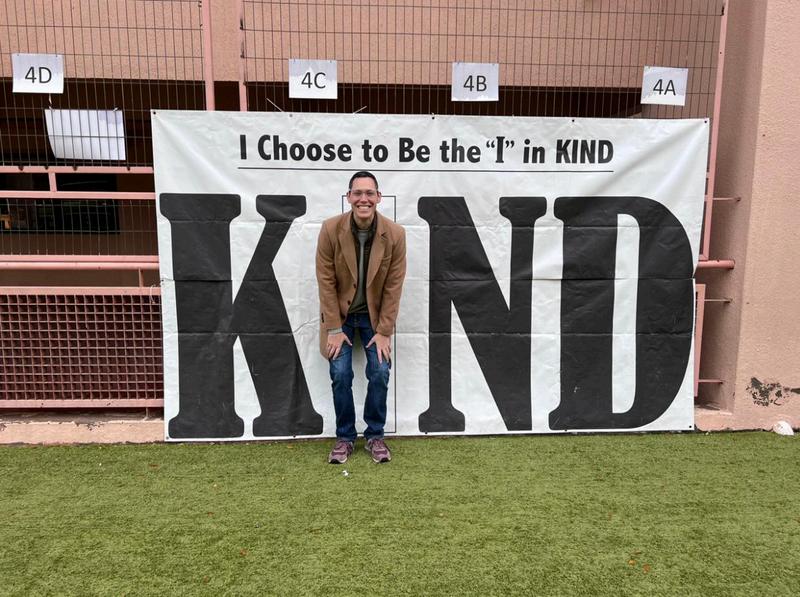
By: Jonah
Mr Billy, one of the elementary school counselors at Nido, chose to be a counselor because he loves helping people and has a natural talent for it He is very passionate about his role at Nido So, what does a counselor do? A counselor is a very special person, not only at Nido but also in other schools around the world. They help people feel calm, safe, and loved.
But being a counselor involves more than just providing support. Counselors also play a crucial role in promoting the social and emotional development of students. They work with children individually, in small groups, and in classroom settings to address a wide range of issues. This could include helping them cope with stress, anxiety, or family issues, as well as teaching them skills to manage their emotions and build resilience. Counselors deal with various issues, such as friendship problems and strong emotions like anger or fear. Turning these emotions into positive feelings like love and friendship is a key part of their work. Balancing self-care with helping others is essential to being an effective counselor.
If you ' re considering becoming a counselor, you might wonder, “What if I want to be a counselor?” Mr Billy asserts, “The most important thing is that you really need to like to help people to be a counselor ” You also need a university degree in counseling or a related field. Additionally, you need to look inside yourself to find what makes you happy, as this will help you bring happiness to others. However, it's crucial not to focus solely on other people. In counseling, it's important to take care of yourself too, as the job can be emotionally draining.
In conclusion, being a counselor is a rewarding yet challenging profession that requires empathy, resilience, and a dedication to helping others. By supporting students' social and emotional well-being, counselors play a vital role in creating a positive and nurturing school environment.
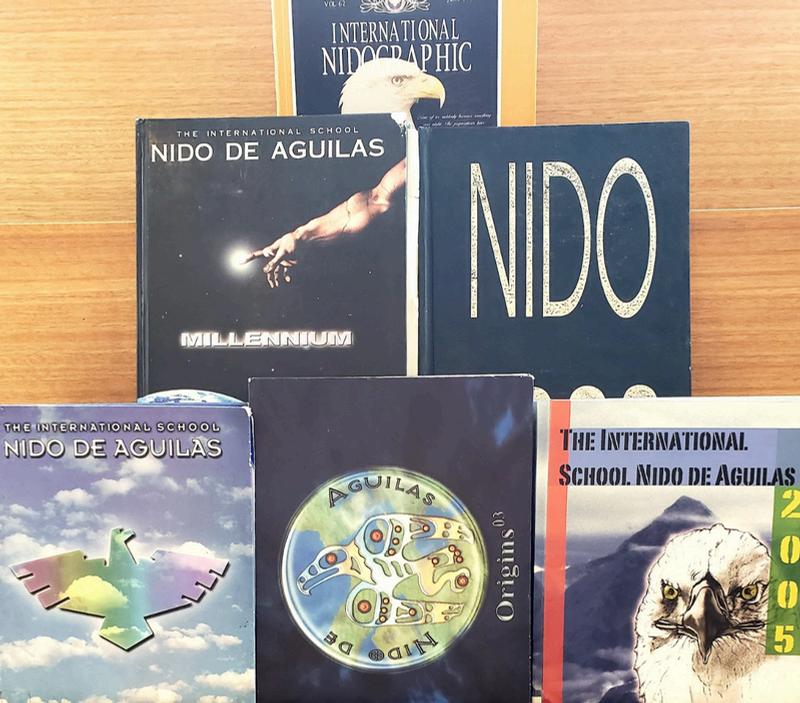
By: Andrea
Lights, camera, and action in the International School Nido de Águilas in Santiago de Chile, Lo Barnechea! First of all, the yearbook is a super fun club to join in the afternoon. In middle school and high school, Maria and Isi say it's a really chill place to be, where everyone is calm. The supervisor, Ms. Sofi, helps out a lot with the process. The yearbook was published on May 27, 2024. Did you know the oldest yearbook is from 1967? There were no colors, it was only black and white, and the school was just a bit of elementary, middle, and high school with only one field Imagine only teachers working on the yearbook!
Next, you might think that the yearbook is like a mystery since almost nobody knows about it. That’s why you might think that students don’t do it, but they do! One job is putting the picture with the name. and trying to add a new color to the background. If you think this is not fun, it's okay, but I'll try to convince you.
However, the bad news is that it is really hard to get in. But that doesn't mean you shouldn’t like it or try it out. If you don’t at least try it, you will never experience something really good.Wich will calm you. Also, you should do the yearbook with some friends. That's gonna be so much fun so don't be shy and just try it out. And the good news is that pretty much all the things are done. All 4th graders 4C, 4E, 4D, 4B, and 4A are preparing to share with Nido

By: Yuika
First of all, a school in Santiago de Chile, Nido de Aguilas, has an After School Activity (ASA) program. Around 1990, it was created. Now, everybody at Nido loves to do ASAs because the ASA teachers and ASA coordinators are working so hard for the students to have fun at ASA.
Next, did you know that ASA teachers and the ASA coordinator work differently? An ASA teacher teaches students to do activities, but an ASA coordinator helps by giving advice to the ASA teachers, bringing supplies for the after-school projects, and creating new ASA projects. The hardest thing about being a coordinator is that she needs to read all the messages before everyone leaves (She works from 10 AM to 6 PM!)
Additionally, being a coordinator is very hard, but it's also fun. ASA teachers and ASA coordinators work for the students because they want to see you smile while you are doing ASAs.
It's the same as your classroom teachers don't they make funny jokes sometimes when they're teaching? Also, being part of the Nido community is fun and hard because the coordinator can meet new people from other countries around the world. Being in the Nido community is also hard because everyone needs to follow the 3Bs. In addition, the teachers need to check if everyone is following the 3Bs. But it's okay to make mistakes. Mistakes help you learn new things.
In conclusion, ASAs at Nido are a great way to have fun and learn Remember, trying new activities and making mistakes are part of the journey to success!
By: Bruce Arthur Collins Quiroga
The Portrait of a Nido Learner encompasses being a connector, thinker, inquirer, designer, and changemaker. This portrait was created by a collective effort of many individuals. Below you will read an interview with Ms. Patricia Podorsek.
How Do Nido Students Learn?
Nido students learn effectively in an environment that fosters trust, enabling them to ask questions freely. We strive to create a classroom atmosphere where teachers have the flexibility to adapt their teaching methods to suit the students' needs. This approach builds a strong trust relationship between students and teachers, encouraging open inquiry. We teach all subjects with a philosophy focused on being studentcentered rather than teacher-centered.

How Did Nido Teach Before?
In the past, Nido's teaching methods were more traditional. Students sat in rows of single desks, and the teacher would instruct from the front while students followed along.
Did We Have Smart Boards Before?
Yes, we had smart boards before, although they were somewhat different from the ones we use now.
How Do the Nido Hills Connect with the Portrait of a Nido Learner?
The Nido Hills can enhance the traits of a Nido Learner. By using the Nido Hills, we can become better connectors by engaging with nature, interacting with others, and learning in outdoor environments. The hills also foster critical thinking, allowing us to reflect on past actions and contemplate improvements. Unlike artificial learning environments, real-life experiences in nature provide more authentic learning opportunities.







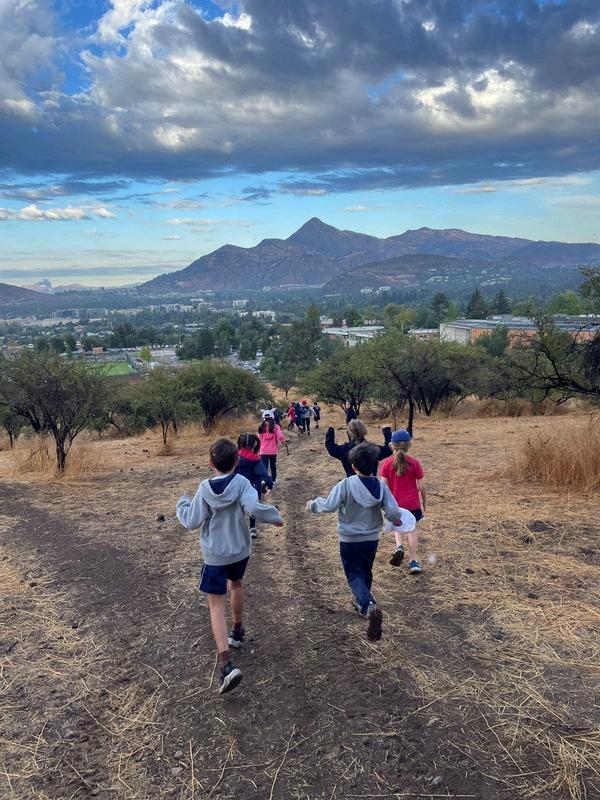


By: Yichen
Everybody knows Nido is an international school, but how many students are from every country? Miss Andrea Benasus works in the admissions office and said there are students from 49 countries in Nido. The most people are from Chile; there are 834 people from Chile. lt’s about half of Nido!!!
Why did they come to Nido? She said maybe they are searching for an international school. Or their families call their friends, and the friend’s child could come to Nido. Or they search from the internet, and more students come.
At the beginning of Nido there were just three students in Nido!!! One of them was from Chile, two of them were from Germany. Now, Nido has students from 47 more countries. The students come to Nido maybe because they want to study English and travel to the U.S.A and countries that speak English.
At the beginning there were just two countries in Nido, but it is different now. It makes Nido a very international school.

in 1964
By Mateo
This is the story of a family extremely related to the International School Nido de Aguilas told by one member of the family: Dani Barillas, class of 2014, currently working in learning support in the elementary school Dani is the sibling of Javiera, class of 2007, Macarena, class of 2016, and Catalina, class of 2024 Their mom, Elke Arnold, worked at Nido in the purchasing office
Can you tell me a little about yourself?

First of all, I was born and raised here in Chile, and I started learning at Nido when I was 4 years old. Next, I graduated in 2014 with both a Chilean diploma and a USA diploma. After that, I wanted to be a chef and graduated from that program. Then, I decided to become a teacher and took classes to become one. Now, I am going to get married to a classmate from school. My mom worked here, and my siblings also went to school here.
What did Nido look like when you learned here?
To begin with, Nido in elementary school looks just like it does now. Then, in middle school, I was there for only one semester, and it looked like the high school. Finally, in high school, the pool and the gym were added. We also had Chromebooks, and my generation was the biggest. We had giant notebooks, one for math and another one for reading. There was even a special math project for advanced students.
What are things you like about Nido?
One thing I like is the community because the people at Nido are from all over the world, and it is very open-minded. Most of my friends are from different countries. For instance, I am getting married in January and invited people from Korea, India, and more. This global community is something special for a Nido student
What are things you would like Nido to add?
Furthermore, I think Nido should be more inclusive and have more screeners for math
What are the things that impress you the most that Nido has made?
Additionally, in the building area, I would say the infrastructure is impressive There are also new ways to learn and different strategies that are very effective
What are things that you would like Nido to never change?
Also, it helps you grow from Pre-K to 12th grade. For example, for those who like science in high school, there's a program for that. As a community, we help others and support each other.
What are things you learned that you think no other school would have taught you?
Importantly, I learned to accept how we are and to feel empowered as students. It teaches you to stand up for yourself. The experiences we have and the people we meet can shape our lives in wonderful ways.







By: Julian 4E
Did you know that the first computer at Nido was introduced first around 2005? Lucky for you I interviewed Marco Vera who works in technology at Nido. He will give us information about the evolution of technology at Nido.
To start with, I asked Marco, what was the first type of computer at Nido? He said that “The first type of computer at Nido was an Imac, it was colorful and they were the G1 (1st Generation). They were 14 Inches.” Marco says that they were beautiful. They had their keyboard and mouse. Marco also told me that after the years passed by, the computers evolved to a G5, they were a bit bigger, they were also white but they were very heavy to carry around They were very good. The 2nd question was what year was the first computer introduced?” He said, “I came to Nido in 2005 and at that time I managed to use a G1 that was green. For me the interface was very difficult because I came from the world of Windows (Company).”
Something else I asked Marco is tell me about your experience working at Nido? He said, “When I came to Nido in 2005, I didn't know about this school and I was surprised because of the parks, because it has a lot of green etc. Due to the technology, there was a lot of technology that I didn't know of. When time passes, I've been learning and by the years past. Technology constantly has been evolving.” Marco was very pleased with his job.
This is what Nido used to use in the year 2000: It's called a Projector. The way it works is that the teacher had to put an object, paper etc.
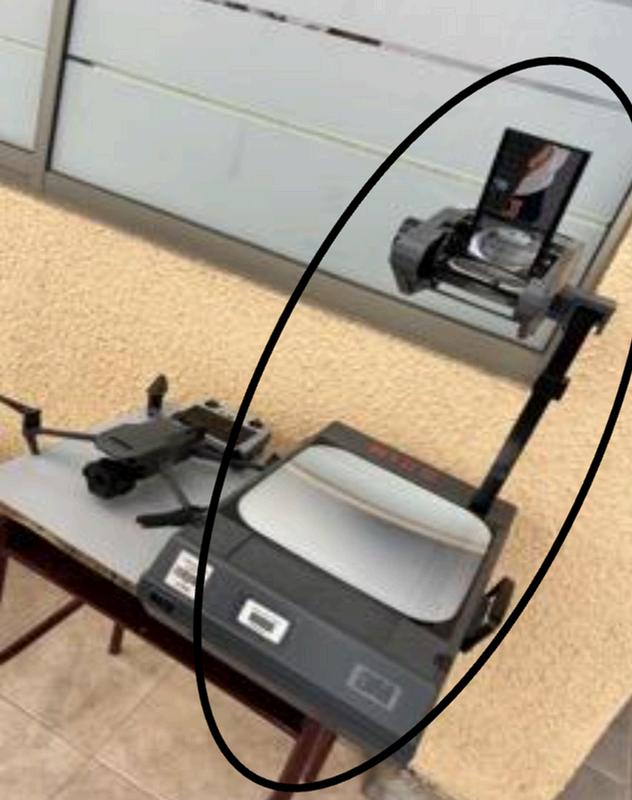

By Erich
Do you want to help the planet? Nido started the recycling program to help the planet. Mr. Chad is the teacher of Changemakers, and he is trying to help Nido and the planet. I asked him about Nido’s new, waste management program.
To start, Mr. Chad told me about when Nido started recycling and why. He told me, throughout the 90 years of Nido we never really got this right; they tried, we tried, there was never long lasting success.
I asked Mr. Chad how does Nido recycling work, and he said a company is working with all the divisions to create a quality system.

Next, I asked Mr Chad what does Nido do to make students recycle? He told me they do a campaign for the students to know how to recycle, but some students didn’t choose the correct way. When we don’t help the planet, the planet keeps dying, and I think they think that they will die before the planet dies, so they don’t care about helping the planet.
Finally, I asked Mr. Chad, “How will recycling be in the future?” He responded that “It will be better if we continue to improve in proper habit building. We will have a compost system, we’ll convert the soil, the soil will go to the garden.” Does this article make you want to help the planet?


By Adeel
Usually, if you want to see fossils, you would go to a museum. However, at Nido, it’s different from other schools because the museum comes to you every two years. Any grade can go, but you might not understand everything if you're in kindergarten. The group is called Geopaleo Limited, and the fossils they have can date back to 500,000 years ago—that's super far back in time. This happened to me on May 9, 2024. The paleontologists told us about so many fossils it was hard to keep count. I learned a lot. They had a cranium from the Stone Age that looked a lot different from our craniums now. It happens every two years. I know it's a long time, but it is worth the wait. Every visit is different from the others; it’s just wonderful.
First of all, Nido invites this team not just to learn about fossils but also to explain their jobs as paleontologists and how they work. They teach us the steps to finding a fossil and more. Nido chooses Geo Paleo because of how they present themselves to us and how interesting their information is. The director of Geopaleo is named Juan, and the largest fossil he has found is a cranium of a Navy seal. They only speak Spanish, which is a little problem, but a classmate can help translate. Some of the fossils are fake but look super realistic. Some of the paleontologists have been doing this for so long. Some were 20 when they found their first fossil. “Finding a fossil isn't hard; you only need permission to dig it up.”
Looking forward, I think new students at Nido will love the paleontologists coming and explaining their job, especially the ones who love dinosaurs and want to be paleontologists themselves. I personally don't think it will last 10 more years because the paleontologists are in their 50s and might retire. However, maybe the company will get younger paleontologists so that in the future they can continue teaching at Nido. Remember, learning about the past helps us understand the future

By Maya Lights…
camera… action! Are we ready? What is the play about? How will it turn out? Will it go smoothly? Hold your horses! The theater is a magical place where you can be anything you want and show everyone your talent. Last year (2023), the ES students worked on a great play, "Annie," about an 11-year-old orphan escaping a "hard-knock life" and meeting a warm-hearted billionaire Meanwhile, the middle schoolers put on a play of "Moana," the chief's daughter who is trying to save the world by bringing back the heart of Te Fiti. Let’s not talk about what we see anymore and instead let's ask the pro.
Firstly, Mr. Ignacio Perez has worked in the Nido Theater of Arts for 2 years and studied in the Burtland School of Music.
“ The theater is not just a place where you watch something,” he says. “The theater should feel welcoming, making you think 'I want to stay here'.” However, the theater also has its rough times. When it comes to sets, things get tricky. Since all the plays are on a similar day, it is a bit tricky to organize one completely different thing to another (mostly when they are big). That is the reason why they would rather use a computer background. The theater is here for the students to build more confidence and show everyone else what they can do
Finally, Mr. Emilio is planning on making “The Wizard of Oz “for next school year (2025) on ES as their musical, and Mr. Ignacio is planning on a better curriculum. Remember, the stage is not just for actors; it's for everyone to shine and show their talent.

By Matias
Did you know that in the admissions department, there are big teachers like the headmasters and the principals? Ms. Moe & Ms. Andrea do the tours of the school Ms. Moe does for middle school and high school, and Ms. Andrea does the tours for the EYS and the ES. Over time the process to get Nido changed in 2019-2020 all the admissions moved online which changed a lot Now admissions are more normal than always.
In one year 250 - 400 people enter Nido CAN YOU BELIEVE IT? The Nido store is in the admissions department but it isn't related to it. The Nido store is from Nido but someone does the stuff in the store. They also have roles like counselors, principals, and most importantly the headmaster. The principals make sure students don’t bully others and do not fight in school. The counselors make sure everyone is comfortable and this makes the school safer.
Finally, the admissions department is going to put photos of how they are going to change the school to a better place. In 2050 they are going to have more things to learn and the campus is going to be bigger than ever. Now they are planning the plan for 2050 making it come true In the present day, many people come to Nido and they have a lot of fun
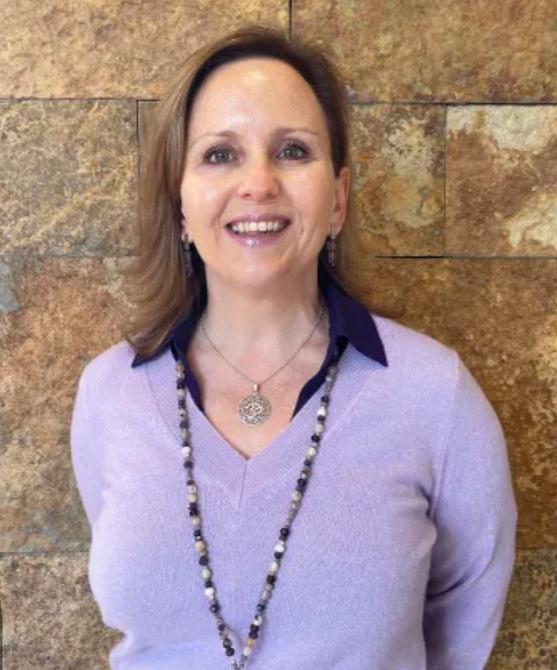
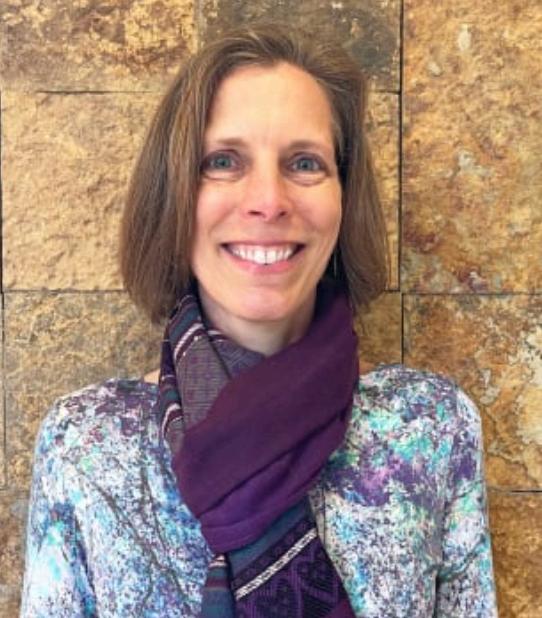
By Dante
Do you like exploring new places with your school? Well, I think that Week Without Walls (WWW) is a great thing for you to do. First of all, WWW started as a thing because teachers wanted the students to connect with nature and build their character strength. This all began in La Serena and Punta De Choros so that the students could connect with nature. However, participating in WWW costs money, as you see. For example, if you are in 6th grade, it will cost about 270,000 pesos, while for 7th-8th grade, it will cost 600,000 pesos, and for 9th-11th grade, it will cost anywhere from 800,000 to 1.2 million pesos.
Moreover, one of our guests, Mr Zack, who is a hiking/WWW teacher, came to Nido in 2006 and has been to WWW about 30-40 times. During WWW, you will sleep or stay in cabins, hotels, and even tents. You will also engage in many activities like rafting, horseback riding, zip-lining, and many more. Many people wonder or ask, "Is Week Without Walls dangerous?" Well, it actually depends on what you ' re doing, like rafting, riding the bus, zip-lining, and more.
Additionally, in Week Without Walls, you can go to many places like San Pedro De Atacama, Chiloe, Torres Del Paine, Patagonia, Buenos Aires, and Lima. For the future of WWW, the organizers want to go to more places that have beautiful nature and are much further away, like in Europe and Asia.
In conclusion, Week Without Walls is an amazing opportunity to explore new places, connectwith nature, and build character Remember, adventure awaits outside the walls of your school!

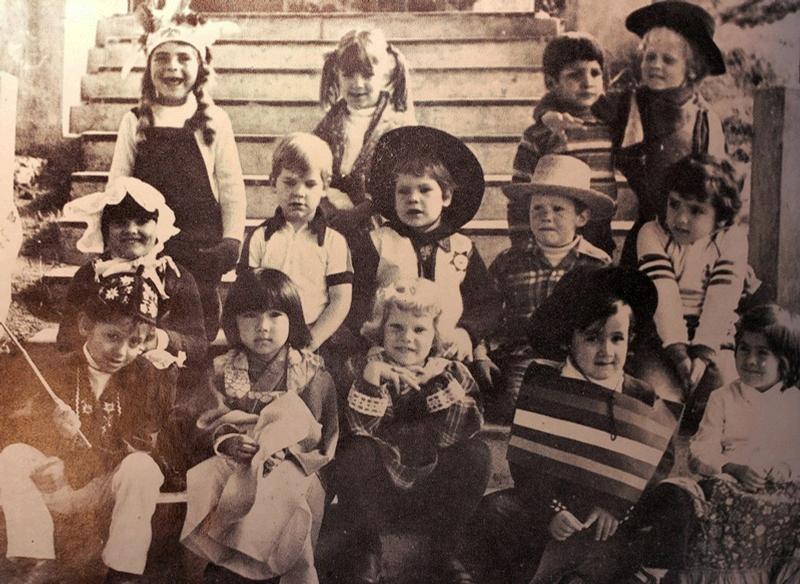
BY Vale
On September 18th, Chile celebrates the Dieciocho holiday, and so does Nido. Ever wondered why we mark this day at Nido? It's because our school is international, and we aim to share Chilean culture with people from other countries. So, we celebrate!
What exactly do we do? We engage in traditional activities like games and dances, enjoy classic Chilean dishes such as sopaipillas and empanadas de pino, and groove to traditional music. This tradition has been a part of Nido for over 26 years, and the community eagerly anticipates the celebration every year. This celebration requires extensive planning, especially for the elementary school. The organizers must coordinate everything by grade level, and it takes more than a month to prepare. During this time, our art and Spanish teachers work closely together. Art teachers handle decorations, while Spanish teachers compose poems This collaboration is just one of the many ways teachers support the celebrations Mr Gonzalo, one of our PE teachers, plays a significant role in the festivities. He leads the cueca dance during the celebration.
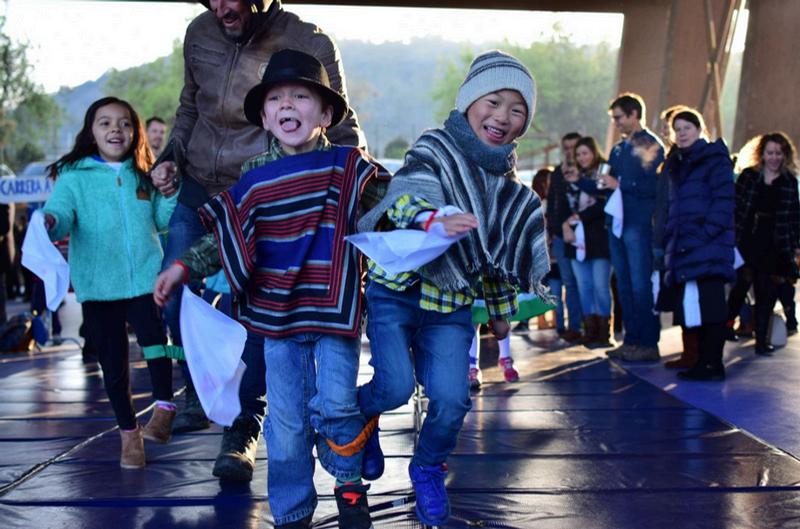
According to Mr. Gonzalo, “The cueca dance is an essential part of Chilean culture, and it should be a part of every Dieciocho celebration.” He also teaches elementary students traditional dances and games to perform for their parents. Some of the games we play on the 18th include cup and ball, trompo, hopscotch, el sapo, and carrera de sacos. For food, you can find sopaipillas, empanadas, and mote con huesillo for sale On the 18th, we engage in many games, eat Chilean food, dance, and enjoy various activities. One year, we even had a horse show. While many people enjoyed it, some found it dangerous. Each year, the celebration brings joy and excitement to the entire Nido community, showcasing the vibrant culture of Chile.

By: Tobias
Fourteen years ago, the Nido de Aguilas board established the elementary school cafeteria. That same year, Ms. Paula Fuentes was hired. Now, as the coordinator of the Nido cafeteria, she is working to create a better dining experience where more kids come in excited to eat lunch.
You might wonder how Nido selects its cafeteria workers. Well, it's quite interesting! Nido advertises the job with detailed requirements, including the desired qualifications, restrictions, rules, and salary range. Then, they interview interested people. They hire the best people to work in the cafeteria.
Another key point is that the cafeteria uses a nutritionist to ensure the food meets dietary and nutritional guidelines. They consider what kids like to eat, such as pasta. Ms. Paula Fuentes explains, “We check the menu and then I go to see how it's going and if the kids like the food.” She then discusses this with the cafeteria administrator to ensure the meals are well-received and if the cafeteria is clean.
The goal of the Nido cafeteria is to make students excited about eating there, providing meals that are both nutritious and appealing. The cafeteria aims to meet all dietary and nutritional guidelines with the help of a nutritionist.
The school also has a food truck that sells snacks and drinks without “sellos” (labels indicating high sugar or calorie content) This adheres to special restrictions by the Chilean government to avoid selling overly sugary or high-calorie items to students Sustainability is promoted by composting non eaten food. Students throw leftovers into designated trash cans, and these are given to an organization that composts the food. This process helps reduce waste and supports environmental sustainability.
Overall, the Nido cafeteria, under Paula Fuentes' guidance, strives to provide nutritious, appealing meals while promoting sustainability and meeting strict nutritional guidelines.

By Rosario
The theater is a place where magic happens, a place where people sing, dance, and mostly where you have fun. First of all, the theater is a great place to be. It is a place where you can take risks and challenge yourself. The theater is a place where you can be happy, and that is what matters. It doesn't matter if you are on stage or in the crowd, you will probably enjoy it the same and be very happy. If you are on the stage or inside the play, the theater can be the place where you feel you can be yourself, and that can make you feel calm and safe The theater makes you feel all of those things
Next, a big part of how the theater functions is the lights and the sound. These two things are very important because the sound makes you feel different feelings and emotions. If you didn't have sound in a play, it might still make you feel feelings and emotions, but not as strongly as you do when there's sound. With lights, you can understand better what is happening in the scene. That is why those things are really important.
Lastly, for a theater to function, you need people who have desire and commitment. For example, if you are going to be a part of a play, you have to want to go to all the rehearsals, be active, and put a lot of effort into your work. As I said before, taking risks and challenging yourself can make you better Of course, you have to put a lot of effort into your work and collaborate with other people so you can do your best.
In conclusion, the theater is a special place where everyone can have fun and be themselves. Remember, the magic of the theater comes from everyone working together!
By Rodrigo
International School Nido de Águilas Elementary School has a diverse student body, and some students encounter learning difficulties, making it tough for them to keep up with their studies In response to this, Nido initiated the Learning Support Program around 4-5 years ago. This program aims to assist students facing academic challenges.
Teachers at Nido began noticing that certain students required extra support to thrive in their studies. Consequently, they collaborated with the Learning Support Services (LSS) teachers to identify these students. The LSS teachers then arrange individual or small group classes during school hours, led by professional educators who offer tailored assistance to meet each student's needs. Thanks to this initiative, many students have seen remarkable progress in their academic journey.
The Learning Support Program holds significant importance within the school community, as it ensures that struggling students receive the help they need to succeed in their classes While encountering difficulties in class is normal, the program ensures that students do not feel overwhelmed or lost. By providing essential support, Nido aims to empower every student to excel academically and thrive in their educational journey. Ms. Shelley Hawkes, Head of Student Support in the Elementary School, emphasized, “The program has been really helpful to students that were in the past frustrated and could not do their best work, but with help every student gets better.” This is the goal and the promise of the Learning Support Program at Nido.

By: Anais
At Nido de Aguilas Elementary, student leaders are chosen each year. Some students even get chosen two years in a row or more! Student leaders solve problems in our school and outside our school Now, let’s see what Mr Billy said in the interview!
How do you support students?
“So the big job with student leadership is organizing the spaces and times for the students to come together…”
What do you think it is like to be a student leader?
“I think about students who want to make a positive change in our community and live our values.”
What do you guys do?
“We talk about different things and most of it is about feedback We also do different initiatives yearly like the teacher appreciation week.
What do you guys talk about and do in meetings?
“It depends on the time of the year. For example, when the fire happened in Viña, the school tried to find things to donate to the kids in Viña.”
Do you like being a part of student leaders?
“100% It’s super cool and it’s my first year running it, so I think there is a ton of space for improvement ”
Do you guys have celebrations and what are they about?
“We have celebrations yearly. The most recent celebration was the teacher appreciation week, which was also mental health month. The students brought snacks to share with the teachers, and they got to know more about other teachers.”
Did the student leaders create the friendship bench
“The idea comes from another school in the US They started it there, and we saw there was an assembly that had a story that goes with it.”
By: Alicia (4E)
Where were you in 2010? I was nothing!... but how was Nido in 2010? To know the answer I interviewed Ms Rebecca Beatty She was a teacher in elementary school And has been in Nido for more than 14 years She was in Nido in 2010
First, she talked about how Nido was in 2010. It was the first year that they had the eagle costume and it was the year they built the swimming pool. And every year we have more students!
Secondly, we talked about her curriculum. She said Nido always has a special curriculum because the teachers help design it. We always had a hand on the science unit, but now we have the Changemakers which is even better And Nido always does a great job teaching students
Next, she told me about a very special thing about Nido. And that is the students!. Because nido brings people from different places and they have different thinking and different interests. And that makes Nido be special and like a big family!
Ms. Rebecca´s story is important for Nido´s history because she saw the big difference between Nido! and she helped the teacher to design a lot of things to make Nido better For example they changed the science unit to changemakers!! Well that is sooo important for Nido right?
Thank you veeeeryy much for reading all my story interviewing Ms.Rebecca. See you!!!!.

By: Ming
If you are asking, “How can I change the world?” Changemakers is the answer! Every day in 10th grade, maybe in school, maybe in the theater, maybe outside Nido, students are always trying to make the world better.
Mr. Jay Goodman is who teaches Changemakers. He does it because he wants to make the world better, and if you ask, “How does he know a lot about Changemakers?” the answer is: by asking and exploring. Mr. Jay’s students are doing projects like helping an orphanage or a school affected by wildfires.
Being a Changemaker is important because you will make the world better.
By Elisa



Art can be hard, but people have learned a lot of facts, like you need time, focus, and creativity. First of all, Ms. Caro has been in school for 13-14 years, and every day she is still learning things from art or students. In 20 years, art teachers are hoping to have trips to other countries to present art from famous artists to learn new shapes or patterns. Additionally, art can help people express their emotions in an art project. Art teachers change their theme or project, for example, drawing yourself and then abstract art, to make students happy. Ms. Carolina teaches 3rd, 4th, and 5th grade and wants more famous artists to come to school and show them their process throughout the years and what they learned about painting or drawing experience.
Moreover, art can have both good and bad aspects. You can't do a project if you don't have time or materials for it, and if you don't have money for a specific thing, it's a problem. But art can also be good; it can help you lower your stress and calm you down. Art can also be a present; you don't have to buy anything, and it can also be a decoration for your home. There are different types of art; it can be abstract, cute, or musical in school, etc. Some students are deeply into art because they enjoy drawing or painting and showing them to the audience. Lastly, art around school can be weird, cool, etc. Art around school is for everybody in the community, especially for the people who like doing art, and maybe they are doing that because
In the future, Ms. Caro wants more time in art, a bigger budget for more materials because kids steal it and lose materials for an activity, and to leave the art class cleaner. Remember, art is a way to express yourself and share your feelings with others!
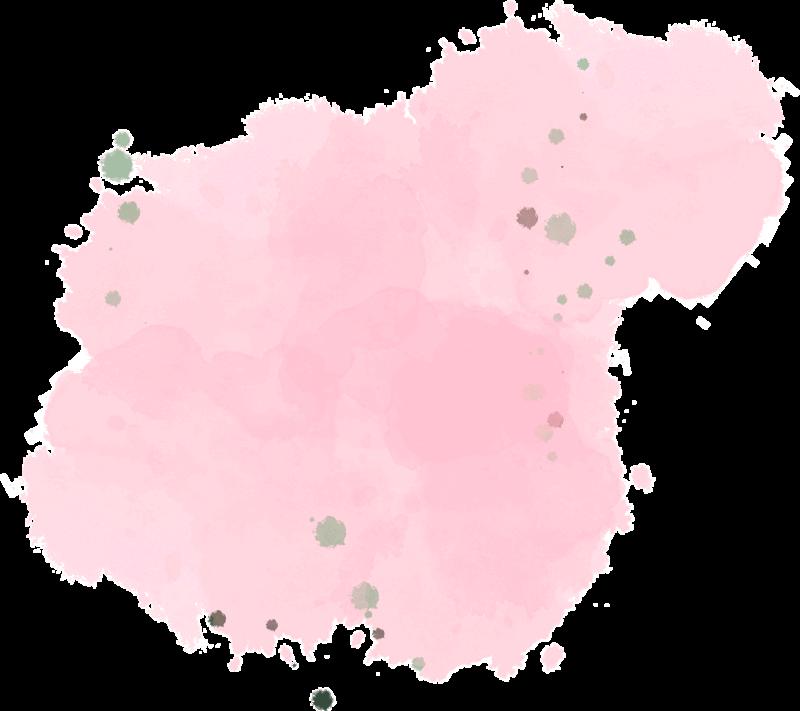
By Franco

Did you know that Mr. Niall, the rugby coach, prefers to play football, but likes to coach rugby more? Well you will get to know Mr. Niall and his history at Nido.
First I asked about his career in rugby and he said, “I started playing rugby in Scotland and also a lot of people there played rugby and I needed to make a decision about soccer or rugby and I choose rugby.” But he also likes to play soccer and coach rugby and now he is teaching rugby here in Nido de Aguilas.
Then I asked Mr. Niall, if he had played rugby in a professional team, and he said “I have played in an Egyptian club and we played against the national team of Egypt and I made two trys.” I then asked how he trains his players, and he said, “At the beginning of the year they were a bit silly but then they started being more focused in class and they said that I train them hard to be better and they like it.” Then I asked, do you think that rugby is a good sport for Nido? And he said, “Yes, because the middle school players are excited when it's their turn to train or play a match and they also work hard to get better.” I also asked if the rugby nido varsity is focused on training, and he said, “Yes, because they are strong to play and they know it and they listen to what I say and yes they are very focused.”
Mr. Niall’s story is important for Nido’s history because he is one of the best trainers and coaches of the team and there are not so many. He wants the kids to get better at playing. The kids also want to get better and Mr. Niall tries his best while he is training.





By Alicia Yoneoka



SAAC tournaments are so exciting, especially volleyball. My amazing interviewee, Lillian who was part of the Nido Eagles varsity volleyball team, told me everything about her experience on the team and at SAAC in Curichiba, Brazil. Keep on reading to find out more about this interesting sport and Lillian's experience on the team.
In Lillian’s time on the team, her position on the court was outsider and she played it because in her club season she was moved there. The position she always wanted to play was libero but she knew that it’s not the right position for her so she became an outsider. Her most common move on the court is “I hit the ball a lot but also dive on the floor a lot”.
Lillian played in a lot of tournaments like SAAC and the Copanido league. They won silver in the Copanido and silver in SAAC . This is what Lillian commented about their SAAC game “We got silver because ISC had great team communication and amazing teamwork”.
Lillian did not always play this sport though, this is what she shared about how she came to play this sport, “I tried out volleyball because I tried a lot of sports and I was bored so I tried volleyball and stuck with it because it was a interesting sport that I actually enjoyed and was willing to play”.
During Lillian's time on the team she learned “New techniques and how to work with different people”. She is still working on trying to read the lines on the court and is getting better with communication. She also enjoyed spending time with her coaches.
In conclusion, this article is important for Nido’s history because they can use this information for future Nido athletes and SAAC/Copanido tournaments, and to get to know more about these amazing athletes and people. Lillian's experience as a Nido athlete is valued for the future and teammates that have experienced similar things at SAAC in the Copanido tournament and in many other ways.
By: Emma
Did you know that Nido de Aguilas became a school 90 years ago? It was founded in 1934. Nido was very different then compared to now. Nido first started in Peñalolén, then moved to La Reina, and finally settled in Lo Barnechea.
In the beginning of Nido’s history, there were only three students. Right now, we have approximately 1,500 students. Did you know that the Nido hills were always part of Nido?
Fourth and fifth grades have not changed much over the years Nido is now 90 years old. Many years ago, smartboards did not exist. Long time ago, elementary school students used to wear uniforms. Even 90 years ago, Nido offered special classes. The after-school activities have always been part of Nido, but they are different now. Today, we have a mix of sports, instruments, and fun activities like cooking and fashion design. When Nido started, it was a pretty small school. Now, with so many students, the school has built new science buildings for the middle school and high school. They also built an aquatics center for everyone to use and a beautiful theater where we watch musicals and plays.
By Quintie
Every school should care about how students are feeling, especially new students. We want new students to feel like they belong at Nido, to see Nido as a home and somewhere they look forward to going every day. If they are being excluded and picked on for being new and different, we need to understand that people are different, and at Nido, we value our differences and see them as a strength. That's why Nido has two DEIB coordinators, Mr. Readwan and Mr. Yik. There are many more, but they are the leaders of the whole DEIB group. Their job is to make sure that everyone has what they need to learn and that everyone is loved and respected. Before we dig deeper into the topic, let's learn about what DEIB stands for. The D stands for diversity, the E stands for equity, the I stands for inclusion, and the B stands for belonging. One of the jobs of Yik and Readwan is to make sure that everyone feels these four things. They ensure that students feel they belong at Nido, feel safe at Nido, and feel respected at Nido for who they are and what they bring to our community Now let's talk about how we can make all this happen We can help by supporting people who have special needs. For example, if someone is in a wheelchair or has a disability, we can help them go up a ramp or push their wheelchair. If someone is having trouble learning something, the teacher can work with them separately to ensure they understand the material. If a new student is having trouble interacting with people or making new friends, the school counselor can meet with them to provide strategies for making friends or to just give them a boost of confidence.
By: Robert
Derrick Quinet has been the athletic director at Nido for 4 years and has had a 26-year career in athletics. He loves his job. He was once a coach for a college basketball team and also played basketball in college. Derrick Quinet is always ready for a challenge. “I have never had a better job,” he said.
The biggest challenge Derrick Quinet faces is finding activities that kids will like. Right now, the most popular sports at Nido are:
Derrick Quinet works with 10 other people to create fun activities such as tournaments for athletes and school events for all ages He has attended 8 SAACs (South America Athletic Conference) and loves to watch athletes play!
He walks around Nido, watching young and older athletes participate in the activities he helped create. He and his team are always working to create more activities for kids to enjoy. Derrick Quinet is really nice, and everyone likes him. All the kids love the activities that he and his team do. “I will always be happy,” said Derrick Quinet.
The biggest challenge Derrick Quinet faces is finding activities that kids will like. Right now, the most popular sports at Nido are:



By: Rafa, 4B
Have you ever been in an argument? Like what is better, football or basketball? If you have, it is like a debate. A debate is about making arguments and choosing what is better.
At Nido High School, students will debate and there will be judges to choose which opinion is better. The Nido debate team went to Brazil this year. At this SAAC tournament, they won 4-5 debates but lost 6-7 debates. Before going to SAAC, they practiced a lot When it is time to practice they come up with silly topics and do research. They often use the news. They meet with Ms. Hazel to practice their debates. Has this inspired you to be a debater? Bring your opinion and share it to other people and judges.
By: Valentina
The yearbook at Nido de Aguilas International School is an annual publication created by high school students and overseen by a teacher. The first yearbook was published in 1963 when the school was located in La Reina. In 1988, the middle school was included in the yearbook for the first time. There were a few years when the yearbook was not published, specifically in 1964, 1965, 1966, 1973, and 1978. This was due to inconsistencies in including information from the high school and elementary school in some editions. By 1990, the yearbook had expanded to cover all four divisions of the school: early years, elementary, middle, and high school
The yearbook is a valuable source of historical and current information about Nido de Aguilas. Each edition features photographs, descriptions, and highlights of school events, capturing the spirit and activities of the Nido community annually
By: Tiana Tubbs
Mr Jon Krumtinger is 6 feet 9 inches tall He is a very funny teacher Currently, he is a fourth grade teacher at Nido. Previously, he was a kindergarten teacher for ten years. Mr. Jon said, “When I was teaching kindergarten, the students were afraid of me. I was so tall they thought I would squish them accidentally because I couldn't see them below. Once they got to know me, then I turned into the world's tallest jungle gym.”
Seeing those tiny little kindergarteners climbing all over Mr. Jon looked like ants climbing a mountain. You can find Mr. Jon in 4th grade where he loves teaching his students.
Ms. Sara Gawura is 5 feet tall and she is a learning coach at school. She is so small that she can curl up into a little ball on an airplane to fall asleep. Ms. Sara also used to teach fourth grade with Mr. Jon who looked like a giant compared to her.







By Matilde Gonzalez

The makerspace is where you go to make and learn anything you want. First of all, the makerspace has been around for seven years. Mr. Martin is the one who started the maker lab in the elementary school, and then they added one in the middle school and high school. In the makerspace, they do a lot of big projects. It doesn't matter how old you are. For example, Mr. Martin collected information from plants and sent it to a database when he was in college!
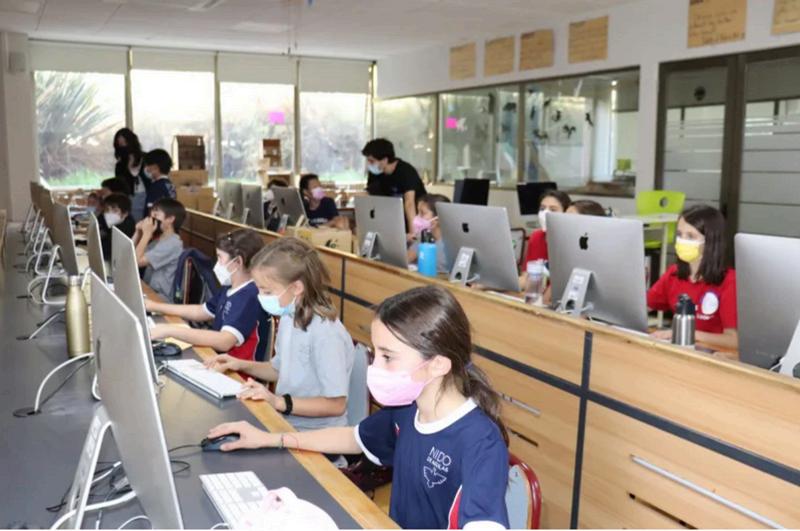
Next, there are differences between the elementary school makerspace and the middle and high school makerspaces. The elementary school makerspace is safer and is an open lab. An open lab means that 4th and 5th graders can come at recess and make stuff But in the high school and middle school, the makerspaces are mostly used for classes, and the classes get harder and harder. The high school maker lab is just opening.
makerspace (winter camp)
Finally, the maker lab in the elementary school has two stations. The first station is for things like change makers, and the second station is for the 4th and 5th graders. Now the middle school is going to have Mr. Martin! Maybe if you practice making things for fun, you will be really good at it! Remember, practicing your skills today can make you a master creator in the future!
By Luca M. 4C Journalist
What is this? What is this called? Is this safe to touch? How much more? That's the sound you will hear in the Nido Hills. First of all, occupying over two-thirds of Nido, the Hills are widely used throughout grades. Whether it's kindergarteners learning basic words or high schoolers making a campfire, students are always busy on the Hills On the Hills, students hike and learn about the environment. They have even cleaned parts of the Nido Hills that were covered in plastic.
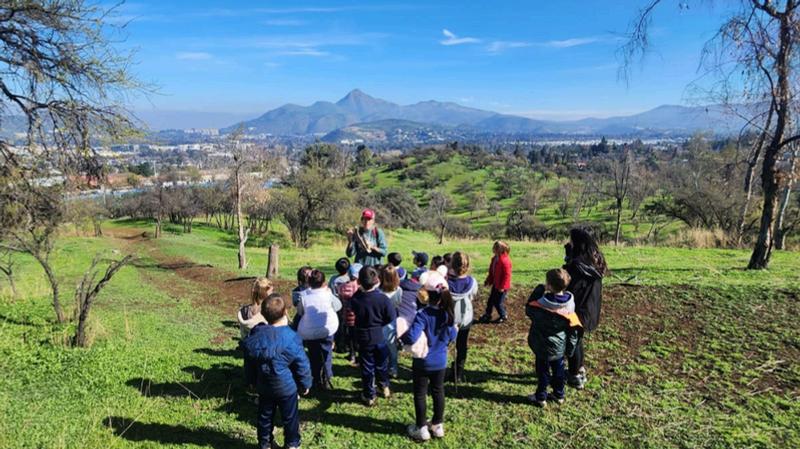
Moreover, the Nido Hills were originally purchased in the early 1960s. Mr. Zach, whose job is to make students connect with nature and learn about the environment, explained that he thought the Nido Hills play a crucial role in the education of all students. Mr. Zach also said this:"Some of our favorite teaching moments are when we work with students in the Nido Hills, whether it's making curricular connections for MS or HS students' science lessons near the Nido creek, exploring for bunny holes and horse tracks as part of a habitat lesson, or asking EYS students to help us gather small, medium, and large for a campfire safety lesson (with s ' mores included!). The hands-on learning safety lesson opportunities for our students, right in our own backyard (the Nido Hills), are authentic and meaningful ways in which we engage with nature in our own local environment and support content across all divisions." This is important because if students don't have fun while learning, it makes it harder to concentrate on your own education
Looking forward, Mr. Zach has been thinking about 'outdoor classrooms.' This means using the Nido Hills to learn common subjects like writing in class. Maybe, in a few years, students will be learning math or changemakers up in the Nido Hills! Additionally, Mr. Zach wants to create a small path for the Nido creek. This is because the Nido creek has been making certain areas in the Nido Hills soggy and annoying to walk through. If you ever see a small man-made path the Nido creek flows through, I hope that reminds you of Mr. Zach! For example, many kids have thought that certain areas of the Nido Hills are dry and come out full of mud because the Nido creek has made that part of land soggy.
By: Elisa 4B
Have you ever met Mr Jon Penhollow? Who is he? You're right, he is the Elementary Principal! Have you ever wondered, what does a principal do? Mr. Jon shared, My role is the elementary principal, and in that role I have the responsibility to make sure everything is working well in order to support our primary goal, which is helping children grow and learn. I also need to make sure someone is mopping the floors and that our teachers are working well¨. Did you know that Mr. Jon has worked with kids since he was 15 years old? Once he was an adult he became a teacher. After that he became the assistant principal. Finally, in 2022, he became the Elementary Principal! His dreams came true! Usually Mr. Jon gets to school at 7:15 am and meets with parents, students and teachers to build relationships. Sometimes, he also walks through classrooms during the day to see if everything is working well. At 5:00 pm he is ready to go back home. His least favorite thing about being a principal is that there is not enough time to learn and have the fun we want. His favorite part is working with kids and helping them learn. Next time you visit the Elementary school, don’t forget to say hello to Mr. Jon, and congratulate him for all his hard work.

By Anto and Interviewed with Mati
DING!
DING! Don't worry they are not going to fight. Today we are comparing one of the oldest teachers (Mr Ed Harkins) vs one of the youngest teachers (Mr.Tommy Scanlon) at Nido. What would it be like to be them? What are their daily routines? First, these teachers are both in the technology and advisory departments. Mr. Tommy also teaches science. Both of them teach in middle school (6th, 7th and 8th grade). Mr. Ed has been teaching for 36 years at Nido, CRAZY!! On the other hand, Mr.Tommy has only been teaching for 2 years. Unfortunately, both of them are leaving this year, which is really sad Mr Ed is going to the U S A to spend time with his family. Mr.Tommy is going back to studying at a university in England. There is a big difference in age.
Mr. Ed is 67 years old!
Mr. Tommy is ……………………………………………………25 years old! When asked to describe what teaching was like in the beginning, Mr. Ed shared, when I started teaching there were no computers. There were only old school projectors.¨ To use an old school projector, you needed a special piece of paper and it was much harder to project Isn't that crazy?! Right now, you might be thinking “ we still have projectors¨, which is true! Unlike Mr. Ed, Mr. Tommy has only taught with the new, modern projectors we use today. With these projectors, you can put anything underneath and it projects it onto the Smartboard. As you can see, technology was very different. In their personal time, these teachers are very different. Mr. Ed likes watching basketball, it is his favorite sport. Mr.Tommy doesn't like to play or watch any sports but likes to play piano.
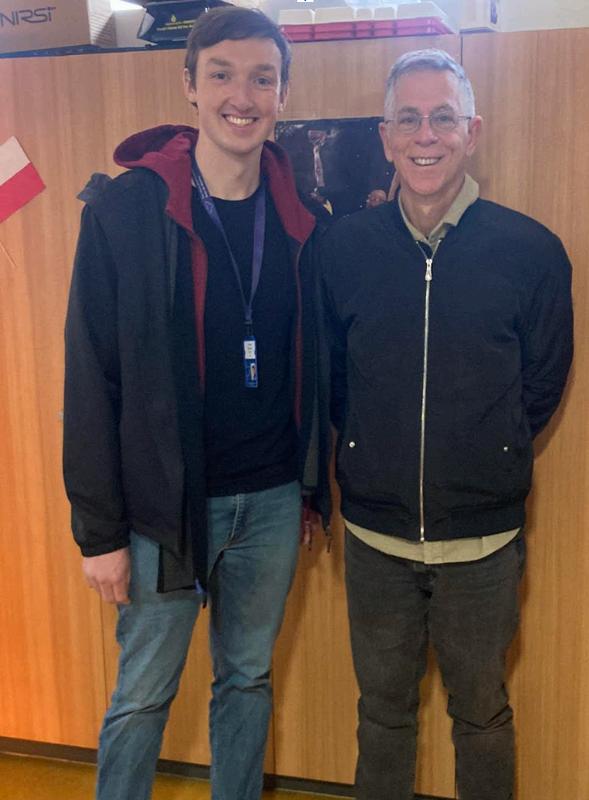
By: Clemente, 4B

Walk into the aquatics center and admire the perfect temperature and the clear blue waters of Nido pool. Do you know about the Nido swimming program? Five days a week the Nido swimming team practices very hard to be champions. They practice for one and a half hours nonstop. They train to win SAAC and other tournaments. At practice, they train butterflies and crawl strokes. They can go as fast as a shark and are very strong. Their first semester is very easy. They mostly win the tournaments from the first semester because the other schools are not practicing as much as Nido. The second semester is very hard. They do SAAC, which is the hardest tournament in all of Latin america. The SAAC tournament is once a year. All the tournaments are on Saturdays. When Nido hosts SAAC, they need to clean the pool after the tournament and it can take up to one day. The Nido Pool is also used to do after school activities from K2 to Middle School. For some kids, they teach them how to swim, and for older students they teach them how to coach. A grade 4 student, Sean shared, When you come into the building it is hot but when you go to the pool it's the perfect temperature. You learn a lot of things and you sometimes have competitions between other schools I like the coaches and to compete with other schools. ”The swim team and program is a very important pCome dive in to do all these things



By Rafael Urzu
For as long as I have been alive, Del Cartwright has been a student at Nido. In fact, she has been here for eleven years, one more than my ten years of life. During this time, Del has played in SAAC tournaments for basketball and soccer. Additionally, she was president of the Nido Student Association and has made many friends here. While Del has spent eleven years here, Ismael is finishing his first year in K1. So, what do these two amazing people have in common? They both love Nido.
First of all, let's see what Del and Ismael like.Del enjoys the famous book series called Percy Jackson.She plays basketball and soccer, and she even went to the SAAC tournaments for both sports.With her friends, she plays basketball and talks.On the other hand, while Del likes basketball and other activities, Ismael has different interests.Ismael likes building with Legos at his house.In school, he plays football with his friends.Ismael is awesome.At school, he loves to read books, his favorite is called The Gruffalo, by Julia Donaldson Del and Ismael have many differences, but many similarities as well.Similarities help us understand one another, while differences allow us to demonstrate who we truly are. Ultimately, combining both similarities and differences makes everyone unique.
By: Samuel, 4B
Have you ever felt like you ' re in all the countries in one place? One day out of the year, Nido De Aguilas has people from all over the world create their own stands to represent their countries. This is the Kermess.
How did Kermess start? What is Kermess now?
Have you ever been to a bake sale? The first Kermess was a bake sale. It was started by Juanita Stevenson. All the money raised in Kermess was donated to help the homeless. Now let's think about Kermess today. Today Kermess is a festival of different countries, food, religion and culture People from all over come and all the money from the tickets still gets donated
There are over 30 stands at Kermess. A few are visited a lot like Brazil. Brazil is one of the most popular stands. As Clemente from grade 4 shared, “I love Brazil because of the food, especially Brigadieros and Guarana.” Some other popular countries are China, USA, Canada, Korea, Mexico, Japan and Chile.
Now that you have heard about Kermess go remind your friends and family to visit Nido during Kermess. Have fun and support a good cause! Rafa from Grade 4 leaves us with a quote, “A reason I love Kermess is because a friend of mine left and every Kermess he comes and I can see him again.” Kermess builds community.


By: Connor, 4B
Sports at Nido keep people happy and proud. Did you know the varsity team has the most skilled players in all Nido sports? However, it’s not easy to make the varsity team. They have to go through lots of tests to prove that they're skilled. Another part of being on the varsity team is travel Did you know they travel to other countries just to play sports? I had the privilege of interviewing the one and only Derrick Quinet He is the Director of Athletics and helps organize SAAC (South America Activities Conference). This tournament is only held once a year for every sport at Nido and around South America. This is also the hardest tournament for high school. When I asked Derrick what is the best win that he has ever had in his time at Nido, he said SAAC 2024 The SAAC in 2024 basketball was held in Lima, Peru at the school called Colegio Franklin Delano Roosevelt. It was the best win because the Nido boys won the championship basketball game. It didn’t come easy though. They first lost to a team named UAS (Uruguay American School) but they came back to defeat them at the championship game. They won the championship and brought the trophy back to Nido. The players understood that if they trained hard they could beat anybody. Another important sports event is the banquet At this banquet they give awards for the best players of the season They have food and drinks After eating the real party starts and they tell all the people that won a prize. Prizes are awarded to people who play multiple sports, who play hard, and who showed good sportsmanship. The big rivals of Nido are Graded (in Brazil). Every time they play Graded, they always play hard on the court. Sometimes Graded wins or sometimes Nido wins, but that is just SAAC. In Chile, the big rivals are Mayflower or Santiago College because the competition is



By Khloe
Waldo Stevenson was the founder of our school. Do you want to learn about him? One interesting fact about him is that he loved education and nature and that is where Nido comes from. Waldo Stevenson, the founder of our school, worked first in a school named “Instituto Inglés” located in Quebradas de Peñalolén, Nido’s beginnings. He enjoyed being a teacher that taught about nature there. He used to do field trips with his students because he loved nature, and he also felt like his class was like a family. It was a very small class with only 6-7 kids. While working at Instituto Inglés he fell in love with Juanita Keller, who was also a teacher at the school. She is still remembered as a great teacher to this day. After being a teacher, Juanita became the school's Elementary and High School Principal. Juanita and Waldo founded and built Nido together.Why did Waldo build the school? When did Waldo build the school? First, Waldo Stevenson built the school because he was interested in education and nature. He wanted to mix his two passions, along with his imagination. That is where Nido comes from, and this is something that stands until today. Nido has always had a connection with nature since its beginnings. In 1964 Nido was being built in Lo Barnechea, with many more students than at the beginning, and that’s how his dream of having a school came true. The only thing that Waldo wanted was that kids from all places could study. Something that Elenor Stevenson, Waldo’s daughter said, was “Waldo only wanted kids to learn, have a good education, and learn to care about nature”. This mission is followed to this day.

By: Philippe
The nurse’s office has always supported injured, sick, and chronically ill students at Nido, as well as addressing mental health and emotional issues. This service has been available since the school's earliest days. However, in the early 2020s, the nurse's office faced a new challenge: the COVID-19 pandemic.

When the pandemic struck, the nurses quickly implemented strict protocols to combat the virus. For three years, they worked tirelessly to prevent COVID-19 from spreading in the school. It was a daunting task: one nurse’s office protecting over 2,000 people. According to Ms. Macarena Yob, one of the school nurses, working during Covid-19 was “very stressful.” She explained, “It changed the dynamic of how we worked in the nurse’s office. It was a very challenging time for our office.”
The nurses monitored the health of students and staff, educated the community about preventive measures, coordinated with local health authorities, organized testing, facilitated contact tracing, and managed quarantines. Their efforts were crucial in keeping the school community safe during this unprecedented health crisis.
As we reflect on the challenges faced and overcome, we extend our deepest gratitude to the dedicated nurses who have tirelessly served our community with unwavering commitment and professionalism. Their resilience and dedication have been an inspiration to us all.
This is why I’m writing these paragraphs, to give all our thanks in the name of the school to these wonderful people, which helped us all during this horrible pandemic.
By: Leticia 4A
The first thing you need for a play is the cast (the actors). To be an actor in the play, you have to audition. Auditions were held in Mr. Emilio’s classroom on Monday, Tuesday, and Wednesday. More than 108 students worked hard to audition for the play, but sadly only half of the kids who auditioned got a part in "The Lion King."
What's it like to be an actor in "The Lion King"?
"It's hard," said Nikita, who plays Sarabi in the play, explaining her point. "Yeah, because we have to remember our lines and when it's our scene, " Laura, who plays Sarafina, agreed with Nikita.
"But it's fun at the same time because we get to meet new people. For example, Emi and I used to never talk, and now we talk all the time," claimed Maria, who plays Rafiki.
"Yeah, sometimes it's even scary. Like, I'm baby Simba in the play, and when I have to act in the gorge, it's scary because you can feel the ground vibrate!" exclaimed Leti. What is it like to be a director of all these amazing actors?
"It's fun and kinda scary because you don't know what the play is going to be like in front of everyone, but I'm very proud of all the kids' hard work on this play," said Piper, one of the directors of "The Lion King."

By: Pablo, 4A
AMISA (American International School of the Americas) is a program where teachers can learn a lot in just three days or up to four weeks. This means that AMISA offers extensive professional development opportunities. According to Ms. Paz, Nido has a lot of freedom in how it teaches and explores knowledge from different schools. This information helps teachers throughout their careers until they retire.
The summer institutes are one of the most important parts of a teacher's career because all teachers are different; some might be ready for new challenges, while others might not be. That's where summer institutes come in. They are a place where teachers can learn and become experts in various subjects, because after all, nobody knows everything.
AMISA has performed many miracles that have significantly benefited specific schools. For example, the Magen David Academy, the only orthodox Jewish international school, experienced tremendous growth. Initially, it had 150 students, but now it has 450 students. This shows that AMISA, in general, is very helpful
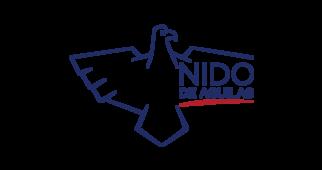
By: Mariano, 4A
Previously, there were 3 sports tournaments in SAAC (South America Athletic Conference). They were football (soccer), basketball, and volleyball. About 3 years ago, the conference started to change. After years of no tournaments because of the pandemic, sports started to come alive again. One of the first new events was cross country, which was hosted along with volleyball at Nido. Other new tournaments included swimming, track and field, tennis, and Fine Arts. According to Derrick Quinet, the athletic director, “SAAC has the widest range of sports in Santiago.” Thanks to all these new sports and tournaments, students have even more opportunities to compete in SAAC. Be on the lookout next year for the swimming tournament to be held at Nido.
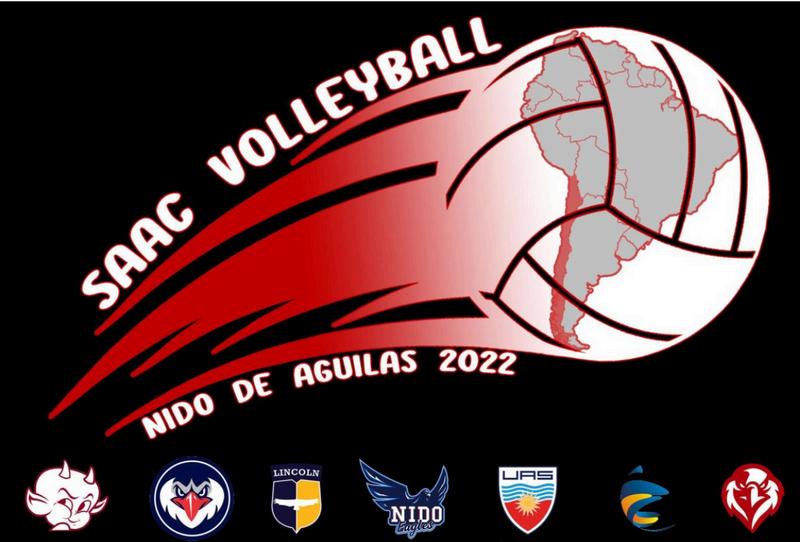
By: Kumar, 4A
Many new teachers come to Nido every year. One of those new teachers is Ms. Shelly, who joined us this year. She came from a school in Hong Kong and has been teaching learning support for 10 years. Ms. Shelly enjoys being a new teacher because she likes meeting other teachers and students. She also likes working with the many expert teachers that we have here at Nido. One of the best things about being a new teacher at Nido is the collaborative environment. Ms. Shelly is impressed by how welcoming the teachers are here. Everyone, both students and teachers, made her feel like she is part of the community. What has impressed her the most about Nido is how the students work to help each other She loves how they share their thinking and ideas with each other and their teachers Lastly, Ms Shelly loves that she can also share her ideas and thinking with teachers and students. This makes Nido a wonderful place to teach

By: Maria Gracia 4A
The talent show was first produced in 2016 by past counselors, Ms. Ana Maria and Ms. Mariana, to offer students the chance to demonstrate their special talents. The show's production process takes about 1 ½ months. It begins with the casting auditions. Students perform their talents in front of the Talent Show Committee, who decide if the acts are suitable for the stage and if the students can perform them. Then, the chosen performers start practicing for the show. This year, there were so many talents that the Talent Show Committee had to divide the show into two performances: one for 2nd and 4th graders, and another for 3rd and 5th graders. Finally, the big day arrives. The cast performed beautifully this year, with a cheerful, supportive audience. “I loved this year’s talent show. I wish I could have been in the audience, cheering them on,” said Billy Shyne. This year’s talent show featured a variety of astonishing performances From Antonia Gonzales’s delightful reenactment of "The Entertainer" by Scott Joplin, to Betty Branch’s hilarious clown animation, and Sophie Bartlet’s diverse Irish dancing, the show was a huge success!
By: Constanza
Nido de Aguilas is a school in Santiago, Chile Nido is an English-speaking school, but it also teaches the national language, Spanish. Additionally, many students at Nido know more than two languages. Let's start by interviewing Anais Yang and Quinte Chen. What is it like to know multiple languages?
Anais: "It's kinda fun but kinda annoying because people always try to speak Cantonese and Mandarin to me, and it becomes annoying."
Quinte: "At first, it's pretty fun because you can have conversations with people who speak one of the languages you know "
Did you go to another school before Nido?
Anais: "I used to go with my brother Emilio when I was 6 and my brother Emilio was 8, and we went to a Chinese school."
Quinte: "I used to go to a Chinese school called Jiaye when I was 6." When did you start learning all these languages?
Anais: "I speak Cantonese because of my parents, English because of school, and Spanish because of school and because I was born in Concepción, Chile."
Quinte: "I started learning Chinese because my parents signed me up for Chinese classes I learned English because I was born in New York, United States, and it's my mother tongue "
Have you lived in all three countries?
Anais: "No, only in China and Chile, but I have been to the United States many times."
Quinte: "No, I have only lived in two out of three countries, the United States and Chile, but I've been to China many times."
Was school hard at the beginning?
Anais: "No, but I got much better in English."
Quinte: "Not really, I only got better throughout the years. "
Do you like knowing all these languages?
Anais: "Yes, because when you want to talk to someone privately, you can say it in another language, and mostly nobody will understand."
Quinte: "Yeah, I like knowing them. I'm looking forward to learning five more languages "
Is it helpful knowing multiple languages?
Anais: "Yes, it is because you can communicate privately unless the other person also knows the language."
Quinte: "Yes, it boosts my knowledge and increases my chances of joining Chinese Harvard "
That was a little bit about what it's like to know multiple languages (multilingual).
By Doyoon
“3, 2, 1, and it is lunchtime!” Students run to the cafeteria, and it is like a crazy party! Students talk loudly, the smell of different foods mixes in the air, and they run even though they are not supposed to. At the start of the second semester in 2024, the school decided to use the cafeteria again and fortunately, there are some good things about this change, like avoiding rain or snow when the weather is bad Students would get wet if they ate in the international park We can eat in the homerooms, but students don’t like that because they can’t talk with friends in other classes, and it is boring to just stay in the classroom all the time. Also, if they eat in the cafeteria, they can stay warm because the cafeteria is inside and the international park is outside For 20 minutes each day, students can enjoy their food in the warm cafeteria
However, there are also some negative impacts. For instance, some people cannot talk because others are too loud, so they raise their voices, and then others talk even louder This creates a terrible cycle, and the main problem is noise. Students all want to hang out with their friends during lunchtime. Mr. Jason, who has worked at Nido for 18 years, emphasized this and added, “As the grade goes up, the students get louder.” Hanging out with friends is good, but screaming and yelling are not so great
Since 3rd, 4th, and 5th graders use the cafeteria every day for 20 minutes, students need to be responsible for cleaning up the table after eating. There is a table-cleaning rule: you pick up your big trash so everyone can use the cafeteria without feeling unpleasant If everyone does their part, lunchtime can be fun for all. Let's remember to respect the space and each other so we can keep having this time together. If you were a student of Nido, would you rather eat in the cafeteria or the International Park according to my information?
By: Dominga
The Eagle Explore program at Nido provides elementary students with a range of sports options, including basketball, volleyball, track and field, hockey, rugby, and baseball. Each year, the program rotates through different sports to keep things fresh and exciting
The program not only focuses on having knowledgeable teachers but also on making classes enjoyable for all students. It serves as an opportunity for high school students to learn how to communicate and teach elementary school students effectively, ensuring that the material is presented in a way they can understand. Additionally, it benefits elementary students by introducing them to sports they can enjoy for years to come This is particularly important for young students who may not be very active in sports simply because they’ve never played it before Through Eagle Explore, these students can explore various sports and become more physically active. The program helps children learn different sports and fosters respect for teammates and opponents. It also facilitates friendships among students from different grades. Nido places a high value on sportsmanship, teaching students to be gracious winners and losers.

At the end of each semester, Eagle Explore holds an awards ceremony to recognize everyone ' s efforts The school also organizes fun games where teachers compete against students The overarching goal of Eagle Explore is to ensure that every class is enjoyable for all children, promoting active lifestyles, teamwork, and friendship. Ultimately, the goal of Eagle Explore is to create an environment where everyone can have a good time. As one of the high school Eagle Explore leaders, Mati, exclaimed, “The kids are just so happy to be there and to have this opportunity to grow as a person! They’re happy to learn a sport and to be with everyone.”
In conclusion, the Eagle Explore program at Nido introduces elementary students to a variety of sports while teaching teamwork, sportsmanship, and respect High school students help as instructors, fostering communication and community. The rotating sports offered keep things exciting, and awards ceremonies and fun competitions add enjoyment and recognition. Overall, Eagle Explore promotes an active lifestyle and creates a positive environment where all students can have fun and do well.
By: Gabriel and Diego
SAAC is a tournament of multi-sports like basketball, soccer, rugby, volleyball and others. Here we are interviewing one of the heads of SAAC at Nido, Mr. Quinet. Did you know that Mr. Quinet has been to SAAC all over the world? In this article we will get to know more about him and his work.
Our first question was, is it hard to organize a SAAC tournament at Nido? Mr Quinet responded, “There's a lot of different parts required to successfully put together a SAAC tournament ” Then we asked, how expensive is a SAAC tournament? Mr Quinet said “The SAAC tournaments are fairly expensive to deliver when you consider all the costs, imagine having to pay the referees, the hotels, the food, the buses, and that adds to a lot of money.”
The third question was, is there a team that you would like to win every year that is not Nido? Mr. Quinet told us that, “I’ve been in athletics all my life and so you always want to see a very competitive tournament and I guess I always want the team that has the best sportsmanship to win.”
Our fourth question was, what is your favorite sport? Mr Quinet responded, “I played basketball at a very high level in college and I have been a coach of basketball. Nowadays I like to play golf and tennis but I like all sports.”
The fifth question was, did you create SAAC? Mr. Quinet said, “I didn't. SAAC is an organization created by other people.”
Our sixth question was, what job did you want when you were a kid? Mr Quinet told us “I had a lot of ideas of what to be, but I always wanted to be a professional athlete When you are a kid you want to do what interests you but when you start growing up you discover different things like business, law, psychology, etc When I started working I realized I love coaching kids, so I wanted to be an athletic or activities director so I was able to do what I wanted when I grew up.”
The seventh question was, have you ever worked with someone who is not productive? Mr Quinet responded, “In life you can always run into people that don't work well.”
Mr Quinet’s story is relevant to Nido’s history because, if it wasn't for Mr Quinet, Nido wouldn't have amazing tournaments and getting fair referees, food for everyone, and international sport opportunities. Also Mr. Quinet helps a lot by organizing the tournaments and helps the players to enjoy visiting Nido.
By: Yeonah Park
You can learn lots of things from the Nido Library. And there's a librarian who stayed a long time in Nido. She knows a lot about Nido. Her name is Ms. Alexia. I interviewed her.

First, I asked her, “ What is a special thing about Nido that you found out? ” And she answered that she thinks the special thing about Nido is that there are different children from different countries. Also she said different countries are represented by children. Children like me! I moved on to the next question.” What was a thing you will remember about Nido? ” She said she loves Nido. She loves the programs of Nido,students of Nido, teachers of nido, class of nido so as she loves everything of Nido, she said she will remember every thing of Nido. I wondered before, why is she working in Nido as Librarian? So that question came out. Soon, I got new information that Ms Alaxia was a teacher before and now she is a Librarian. She was a teacher for 35 years and she stayed as Librarian for 10 years. I can see that she stayed in Nido for a very long time. More than 45 years!
The second paragraph´s start was not very good. I asked her, “Why did you come back to Nido after you graduated?” And she said that she didn't graduate from Nido! OPS! WRONG INFORMATION! She told me that she graduated from another English school. Oh. then let's move on to the next question. So, “ How long do you want to stay in Nido and why? ” Ms.Alexia said that she wants to stay in Nido forever, but she also said that she should start thinking when she is going to leave Nido. She seemed like she was getting sad, thinking about when she was going to leave Nido. “ What was a hard thing that happened in Nido? “ She said it was when someone is leaving or a new change. Like her best friends leaving Nido My friends leaving Nido would be hard for me,too! And that happened a lot to her “ Why did you send your daughter to Nido? “ I asked her another question. She said that she was working in Nido as a teacher. Her daughter is now trying to build a school like Nido. I hope she can make an amazing English school!
Third (or last) paragraph starts now! “ Who helped you when you had a hard time and how do you feel about that? “ I asked. She said she used to have a hard time making decisions. And when she had a hard time like that, her very good friends or Boss helped her. Next question. “ What is your goal for the Library? '' She said her goal for the Library was to make different activities and make everyone come to the Library. Nido Library always has different activities! I wonder what Nido Library will look like when they have more different activities. Now the last question to Ms.Alexia! “ How many years did it take for you to be a librarian? '' She said like the first time, she was a teacher for 35 years, and a librarian for 10 years! It would be good for her to be a different kind of teacher in Nido! She answered my questions so well, and I would love to Interview her again. Thank you to Miss. Alexia by giving me lots of good information and thanks to readers for reading my article!
By: Alexa
You all may wonder how you get a scholarship, but not just any scholarship, a Nido de Aguilas scholarship Well today we are going to go on a journey of a scholarship student her name is Padme.
Okay first question, how did you get a scholarship? “There's a process in Nido. It's like part of the web page that's called Nido Scholars. The applications open in September and the process ends in December”.
Next question, do you think that you got the scholarship at the right time? Why?
“Yes cuz I had a lot of trouble with my past school I changed schools in 2022 cuz I had problems environment wise I live in Puente Alto which is a neighborhood in Santiago So my environment in school wasn't the best There where a lot of fights, it was just very bad, so when my scholarship came I was really happy cuz I got to leave that place and then come here so it was really nice” What school did you go to before? Padme said, “In 2022 I went to Puente Olivo de Puente Alto”
Next, how did you react when they told you, you wined a scholarship? Padme shared, “I was with my mom and my dad and my mom almost cried and I almost cried as well we were all very very happy”. Do you think the scholarship affected your learning? She said, “Yes possibly the academic level is very different here so I had a lot of new opportunities here that I didn't have before”.
Next I asked, do you like Nido? And why? “Yes, because the environment is really really nice I have many friends I don't see a lot of conflict I also don't see bullying which was scary at first and my piers my fellow students have accepted me really well and I really like it”. What subject is your favorite/best at? Spanish IB I'm doing it and it's really really great I love it”.
Then I asked about the process of getting a scholarship? Padme said that, “You apply with written form the normal process and you also fill a form for the scholarship and you talk about school stuff you need really good grades 6 5 that's the normal chilean system 6 5 for 3 years, and then you get in the process for interviews demonstrators” Moving on, do you like school? Padme replied, “Yes I like it I wake up every morning early because I live very far away and I do wake up happy and excited” Last question, do you think the scholarship affected your future? “Yes I have the chance now to study in a lot of places and it's very exciting” I think my interview with Padme is important for Nidos history because it explains a lot about scholarships in Nido. Thank you for reading
Juha
Did you know that in High School, we can make any clubs?! We can make just about ANY clubs from Surf Club to Anime Club?! You can just share your personal hobby with the whole school. Interesting, right? Now read more to find out! ��
Lucas and Ming, my High School interviewees, answered all of my curious questions. My first question was : “How do you create Student Clubs??” Lucas answered : “So, in High School, at the start of every year, there are 4 years in High School : 9th, 10th, 11th and 12th. You can talk to the vice principal to offer if you have an idea for a club. And if they like it, your club is accepted (Yay!) and you can promote it in a “Club Fair” which is basically when you set up a bunch of tables and try to get people to join ”�� That was the end of his question “Ok Thanks for the answer ” :) I flipped my pages I asked Lucas : “Where do you get ” My question was interrupted by Ming joining “Hello!” I said “Sorry, what was the question??” Asked Lucas �� “Where do you get the idea of Student Clubs??” I asked “Oh, if you have hobbies or likes you enjoy, you can just make a club at any time of the year Normally, most Clubs are made at the start of every year because it's an year long Club “Oh! Ok :)” “Then, what are the difficulties of making Clubs??” Lucas answered: “For me, it's obviously getting people to join because you have to promote it and get people excited. Also getting people to come to meetings.” Ming spoke : “It's hard to find funds.” “Most Clubs unless it has a goal that fits under the 3B Nido Values, it's hard to get funds.” “Do you want to improve any Clubs you ' ve already made??” Lucas answered : “The Green Team.; because when I first joined, it was called “Eco Club”�� before but I felt like there were moments when we didn't do much in the meetings so we kinda wasted time. :( So I was a bit passionate about becoming the next club president because once I did, I was able to work on many more projects that I wanted and actually get things going. :D “Thanks for the answer!!” I said, grinning “There are only a few more questions left; “Why did you start making Clubs in the first place??” Lucas answered : For me, making the Cartrix Club, I was just very passionate Doing Cartrix and Magic is my hobby, so I wanted to share it And the Green Team I joined it, not make it ” “I made the Surf Club in High School ��” Ming joined; “Oh! You guys made the Surf Club and the Cartrix Club! Wow ” “I want to try both of them!” “They sound like fun!! ��” “Ok Last question; “Are you still making clubs? If so, which?” Lucas answered with a shake of his head “No Because the Carrix Club and the Green Team is already enough ” Ming agreed. “Ok. Thank you soooo much for answering all my questions and see you if we can!! ;)”
That was my interview. Now that you know more about Student Clubs in High School, let me tell you about why this article is important for Nidos history; well, students (High Schoolers) can spend valuable time doing fun things like Catrix, Surf, and even Anime!! I think it's also really important that it's all free choice! Depending on his or her opinion. I'm not in High School yet but I'll be having fun for sure in High School!!! All thanks to Student Clubs. :>
By: Laura
Hey! Lets learn about change makers! I am gonna interview someone named Mr. Chad in Nido de Aguilas! What am I gonna learn about? I'm gonna learn about Changemakers programs! When did it start? It started in March 2022 1st grade! See you in the first question!
Firstly, Have you ever wondered who are the teachers of changemakers? And Mr. Chad answered, “They are me, which is Mr. Chad, Mr. Martin, Ms. Patricia, and other teachers! They like helping each other and giving advice to others.” Have you ever wondered why we have change makers? “People need change makers because many people ask for help with some energy plans and also maybe wildfires might happen and endangered animals we help them so we turn into CHANGEMAKERS!”
Secondly, have you ever wondered who brought up the changemakers program? “Hmmm… let's think...Oh! I know! Well actually nobody brought it up…I would be so happy if someone made it and brought it up.. But I am surprised. The teachers worked together to make it. Did you know that teachers/ change maker teachers like giving challenges to their students!”
Lets go to the next question! Teachers make mistakes like we do, did you know that change makers get better bit by bit!, just like a hiker gets up bit by bit! They work together, they help each other to get better, they usually get better by giving challenges to students, they also have goals to accomplish. You could interview one of the teachers for more information about changemakers.
Why is Mr. Chad and other teachers important for Nido’s history? Well, they're important because when they give us challenges, we learn about the teachers, and the challenges also say that we have to collaborate with our teammates with their challenges.”





JOIN MR. PEA AS HE VISITS THE DIFFERENT ERAS OF TIME AND LEARN ABOUT IMPORTANT HISTORICAL EVENTS ALONG SIDE HIM.
The Crazy Adventures of Mr. Pea is available and accessible in the media center, so if you want to get to know him, come check him out in the Library of Nido de Aguilas!






Coming soon, in 2034, our next signature issue....
